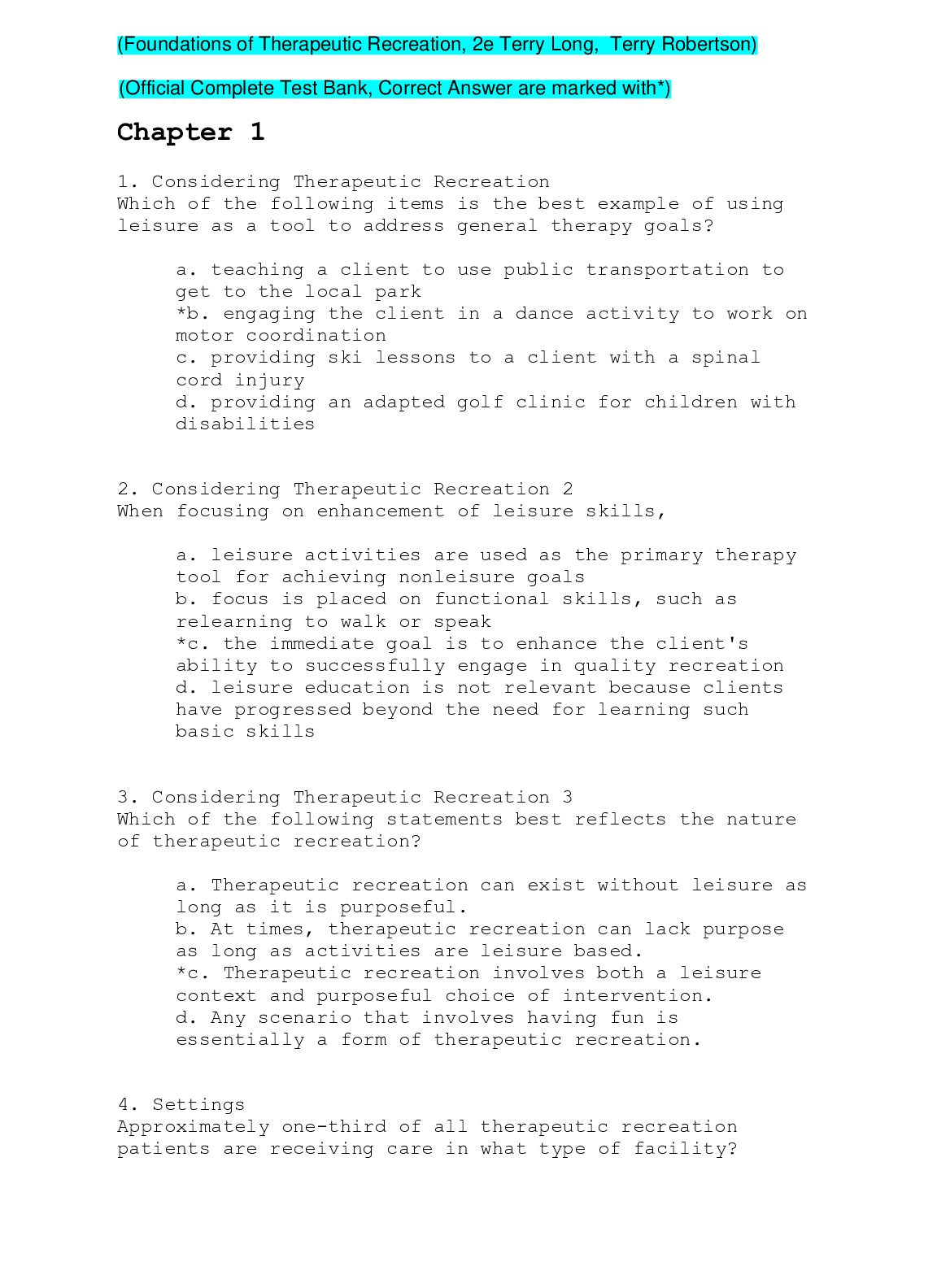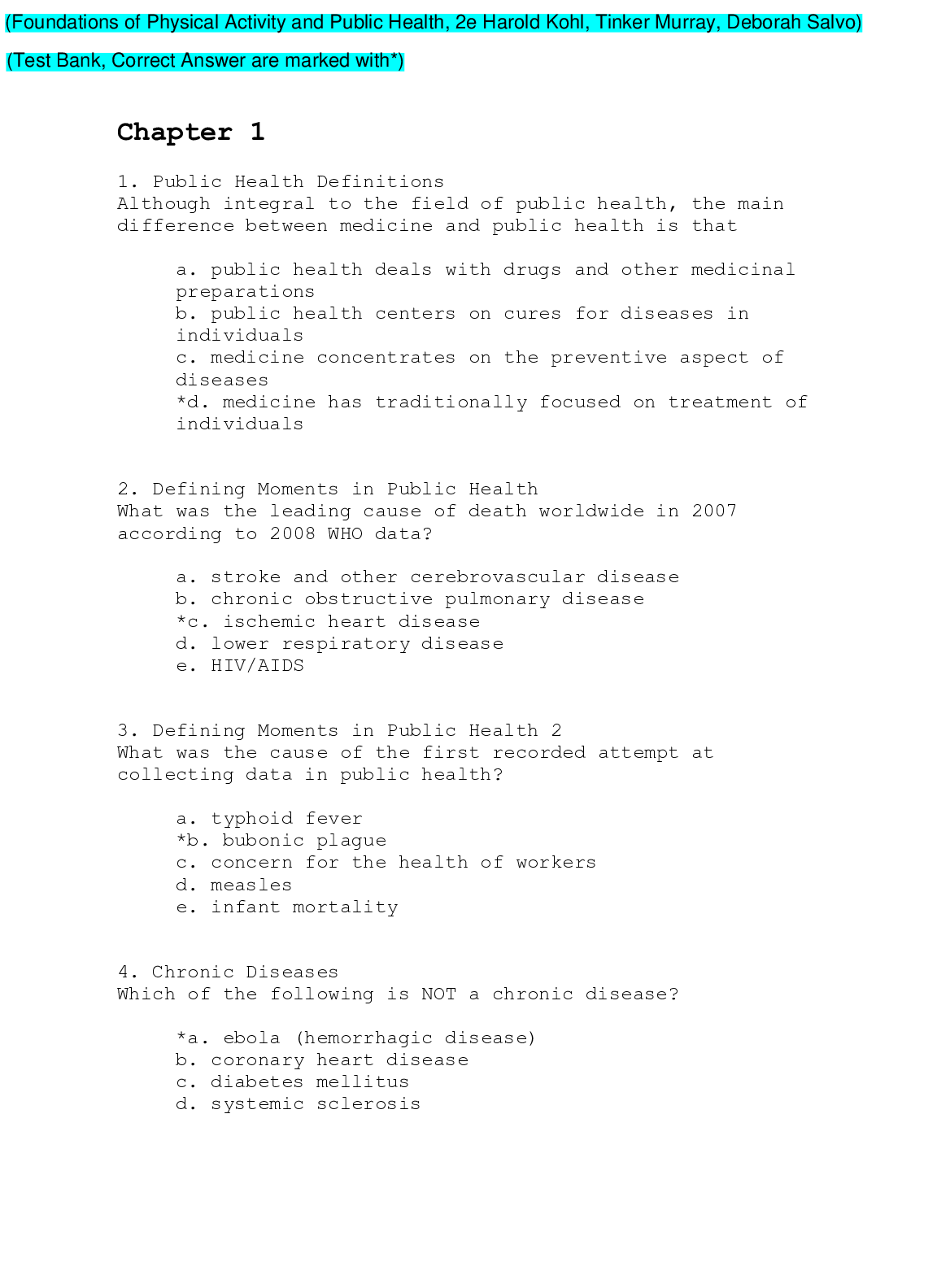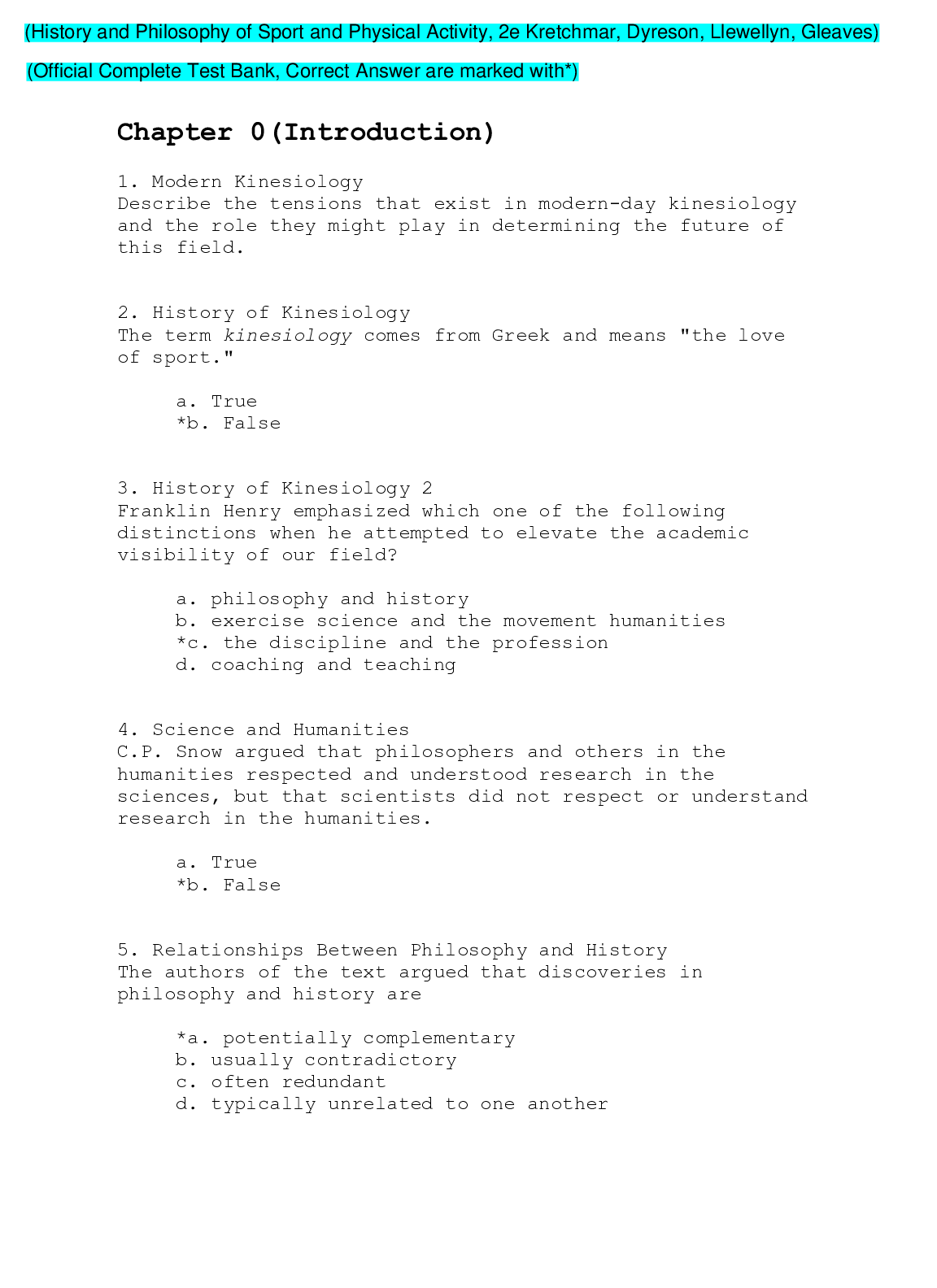Biology > TEST BANK > Test Bank for Molecular Biology: Principles and Practice 2nd Edition by Cox (All)
Test Bank for Molecular Biology: Principles and Practice 2nd Edition by Cox
Document Content and Description Below
Test Bank for Molecular Biology: Principles and Practice 2e 2nd Edition by Michael M. Cox, Jennifer Doudna, Michael O'Donnell ISBN-13: 9781464126147 Full Chapters test bank included - Instant Down... load I Foundations 1 Evolution, Science, and Molecular Biology Moment of Discovery 1.1 The Evolution of Life on Earth What Is Life? Evolution Underpins Molecular Biology Highlight 1-1: Observing Evolution in the Laboratory Life on Earth Probably Began with RNA The Last Universal Common Ancestor Is the Root of the Tree of Life Evolution by Natural Selection Requires Variation and Competition Section 1.1 Summary 1.2 How Scientists Do Science Science Is a Path to Understanding the Natural Universe The Scientific Method Underlies Scientific Progress The Scientific Method Is a Versatile Instrument of Discovery Hypothesis and Discovery Model Building and Calculation Hypothesis and Deduction Exploration and Observation Inspiration Serendipity Scientists Work within a Community of Scholars Section 1.2 Summary ? Unanswered Questions How We Know Adenine Could Be Synthesized with Prebiotic Chemistry Clay Had a Role in Prebiotic Evolution Darwin’s World Helped Him Connect the Dots Key Terms Additional Reading General The Evolution of Life on Earth How Scientists Do Science 2 DNA: The Repository of Biological Information Moment of Discovery 2.1 Mendelian Genetics Mendel’s First Law: Allele Pairs Segregate during Gamete Formation Mendel’s Second Law: Different Genes Assort Independently during Gamete Formation There Are Exceptions to Mendel’s Laws Incomplete Dominance Codominance Linked Genes Section 2.1 Summary 2.2 Cytogenetics: Chromosome Movements During Mitosis and Meiosis Cells Contain Chromosomes and Other Internal Structures Mitosis: Cells Evenly Divide Chromosomes between New Cells Meiosis: Chromosome Number Is Halved during Gamete Formation The Process of Meiosis Sex Determination Section 2.2 Summary 2.3 The Chromosome Theory of Inheritance Sex-Linked Genes in the Fruit Fly Reveal That Genes Are on Chromosomes Linked Genes Do Not Segregate Independently Recombination Unlinks Alleles Recombination Frequency Can Be Used to Map Genes along Chromosomes Section 2.3 Summary 2.4 Foundations of Molecular Genetics DNA Is the Chemical of Heredity Genes Encode Polypeptides and Functional RNAs The Central Dogma: Information Flows from DNA to RNA to Protein—Usually Ribosomal RNA Messenger RNA Transfer RNA Functional RNAs Mutations in DNA Give Rise to Phenotypic Change Highlight 2-1: Medicine The Molecular Biology of Sickle-Cell Anemia, a Recessive Genetic Disease of Hemoglobin Section 2.4 Summary How We Know Chromosome Pairs Segregate during Gamete Formation in a Way That Mirrors the Mendelian Behavior of Genes Corn Crosses Uncover the Molecular Mechanism of Crossing Over Hershey and Chase Settle the Matter: DNA Is the Genetic Material Key Terms Problems Additional Reading General Mendelian Genetics Cytogenetics: Chromosome Movements during Mitosis and Meiosis The Chromosome Theory of Inheritance Foundations of Molecular Genetics 3 Chemical Basis of Information Molecules Moment of Discovery 3.1 Chemical Building Blocks of Nucleic Acids and Proteins Nucleic Acids Are Long Chains of Nucleotides Proteins Are Long Polymers of Amino Acids Chemical Composition Helps Determine Nucleic Acid and Protein Structure Chemical Composition Can Be Altered by Postsynthetic Changes Section 3.1 Summary 3.2 Chemical Bonds Electrons Are Shared in Covalent Bonds and Transferred in Ionic Bonds Chemical Bonds Are Explainable in Quantum Mechanical Terms Forming and Breaking of Chemical Bonds Involves Energy Transfer Electron Distribution between Bonded Atoms Determines Molecular Behavior Section 3.2 Summary 3.3 Weak Chemical Interactions Van der Waals Forces Are Nonspecific Contacts between Atoms The Hydrophobic Effect Brings Together Nonpolar Molecules Adjacent Bases in Nucleic Acids Participate in Noncovalent Interactions Hydrogen Bonds Are a Special Kind of Noncovalent Bond Combined Effects of Weak Chemical Interactions Stabilize Macromolecular Structures Weak Chemical Bonds Also Facilitate Macromolecular Interactions Section 3.3 Summary 3.4 Stereochemistry Three-Dimensional Atomic Arrangements Define Molecules Biological Molecules and Processes Selectively Use One Stereoisomer Proteins and Nucleic Acids Are Chiral Highlight 3-1: The Behavior of a Peptide Made of D-Amino Acids Section 3.4 Summary 3.5 The Role Of ph And Ionization The Hydrogen Ion Concentration of a Solution Is Measured by pH Buffers Prevent Dramatic Changes in pH The Henderson-Hasselbalch Equation Estimates the pH of a Buffered Solution Section 3.5 Summary 3.6 Chemical Reactions in Biology The Mechanism and Speed of Chemical Transformation Define Chemical Reactions Biological Systems Follow the Laws of Thermodynamics Catalysts Increase the Rates of Biological Reactions Energy Is Stored and Released by Making and Breaking Phosphodiester Bonds Highlight 3-2: ATP: The Critical Molecule of Energy Exchange in All Cells Section 3.6 Summary How We Know Single Hydrogen Atoms Are Speed Bumps in Enzyme-Catalyzed Reactions Peptide Bonds Are (Mostly) Flat Key Terms Problems Additional Reading Chemical Building Blocks of Nucleic Acids and Proteins Chemical Bonds and Weak Chemical Interactions Chemical Reactions in Biology 4 Protein Structure Moment of Discovery 4.1 Primary Structure Amino Acids Are Categorized by Chemical Properties Nonpolar, Aliphatic R Groups Polar, Uncharged R Groups Polar, Charged R Groups Nonpolar, Aromatic R Groups Amino Acids Are Connected in a Polypeptide Chain Evolutionary Relationships Can Be Determined from Primary Sequence Comparisons Highlight 4-1: Purification of Proteins by Column Chromatography and SDS-PAGE Section 4.1 Summary 4.2 Secondary Structure The α Helix Is a Common Form of Protein Secondary Structure The β Conformation Forms Sheetlike Structures Reverse Turns Allow Secondary Structures to Fold Section 4.2 Summary 4.3 Tertiary and Quaternary Structures Tertiary and Quaternary Structures Can Be Represented in Different Ways Domains Are Independent Folding Units within the Protein Supersecondary Structural Elements Are Building Blocks of Domains Structural Motifs Containing a β Sheet Motifs with α Helix and α Helix / β Sheet Structures Quaternary Structures Range from Simple to Complex Intrinsically Unstructured Proteins Have Versatile Binding Properties Protein Structures Help Explain Protein Evolution Highlight 4-2: Protein Structure Databases Section 4.3 Summary 4.4 Protein Folding Predicting Protein Folding Is a Goal of Computational Biology Polypeptides Fold through a Molten Globule Intermediate Highlight 4-3: Prion-Based Misfolding Diseases Chaperones and Chaperonins Can Facilitate Protein Folding Protein Isomerases Assist in the Folding of Some Proteins Section 4.4 Summary 4.5 Determining the Atomic Structure of Proteins Most Protein Structures Are Solved by X-Ray Crystallography Amplifying Diffracted X Rays Reconstructing the Protein Image The Initial Model Refinement Smaller Protein Structures Can Be Determined by NMR Obtaining Primary Data Tertiary Structure Determination Section 4.5 Summary ? Unanswered Questions How We Know Sequence Comparisons Yield an Evolutionary Roadmap from Bird Influenza to a Deadly Human Pandemic We Can Tell That a Protein Binds ATP by Looking at Its Sequence Disulfide Bonds Act as Molecular Cross-Braces to Stabilize a Protein Key Terms Problems Additional Reading General Primary Structure Secondary Structure Tertiary and Quaternary Structures Protein Folding Determining the Atomic Structure of Proteins 5 Protein Function Moment of Discovery 5.1 Protein-Ligand Interactions Reversible Binding of Proteins to Other Molecules Follows Defined Principles Protein-Ligand Interactions Can Be Quantified DNA-Binding Proteins Guide Genome Structure and Function Nonspecific DNA-Binding Proteins Specific DNA-Binding Proteins Section 5.1 Summary 5.2 Enzymes: The Reaction Catalysts of Biological Systems Enzymes Catalyze Specific Biological Reactions Enzymes Increase the Rate of a Reaction by Lowering the Activation Energy The Rates of Enzyme-Catalyzed Reactions Can Be Quantified Highlight 5-1: Reversible and Irreversible Inhibition DNA Ligase Activity Illustrates Some Principles of Catalysis Section 5.2 Summary 5.3 Motor Proteins Helicases Abound in DNA and RNA Metabolism Helicase Mechanisms Have Characteristic Molecular Parameters Section 5.3 Summary 5.4 The Regulation of Protein Function Modulator Binding Causes Conformational Changes in Allosteric Proteins Allosteric Enzymes Have Distinctive Binding and/or Kinetic Properties Autoinhibition Can Affect Enzyme Activity Some Proteins Are Regulated by Reversible Covalent Modification Phosphoryl Groups Affect the Structure and Catalytic Activity of Proteins Some Proteins Are Regulated by Proteolytic Cleavage Highlight 5-2: HIV Protease: Rational Drug Design Using Protein Structure Section 5.4 Summary ? Unanswered Questions How We Know The Discovery of the Lactose Repressor: One of the Great Sagas of Molecular Biology The lacI Gene Encodes a Repressor Discovery of the Lactose Repressor Helped Give Rise to DNA Sequencing Key Terms Problems Additional Reading General Protein-Ligand Interactions Enzymes: The Reaction Catalysts of Biological Systems Motor Proteins Regulation of Protein Function II Nucleic Acid Structure and Methods 6 DNA and RNA Structure Moment of Discovery 6.1 The Structure and Properties of Nucleotides Nucleotides Comprise Phosphates and Characteristic Bases and Sugars Phosphodiester Bonds Link the Nucleotide Units in Nucleic Acids The Properties of Nucleotide Bases Affect the Three-Dimensional Structure of Nucleic Acids Nucleotides Play Additional Roles in Cells Section 6.1 Summary 6.2 DNA Structure DNA Molecules Have Distinctive Base Compositions DNA Is Usually a Right-Handed Double Helix DNA Adopts Different Helical Forms Certain DNA Sequences Adopt Unusual Structures Highlight 6-1: DNA Nanotechnology Section 6.2 Summary 6.3 RNA Structure RNAs Have Helical Secondary Structures RNAs Form Various Stable Three-Dimensional Structures Highlight 6-2: RNA Structure Governing HIV Gene Expression Section 6.3 Summary 6.4 Chemical and Thermodynamic Properties of Nucleic Acids Double-Helical DNA and RNA Can Be Denatured Nucleic Acids from Different Species Can Form Hybrids Nucleotides and Nucleic Acids Undergo Uncatalyzed Chemical Transformations Base Methylation in DNA Plays an Important Role in Regulating Gene Expression RNA Molecules Are Often Site-Specifically Modified In Vivo The Chemical Synthesis of DNA and RNA Has Been Automated Section 6.4 Summary ? Unanswered Questions How We Know DNA Is a Double Helix DNA Helices Have Unique Geometries That Depend on Their Sequence Ribosomal RNA Sequence Comparisons Provided the First Hints of the Structural Richness of RNA Key Terms Problems Data Analysis Problem Additional Reading The Structure and Properties of Nucleotides DNA Structure RNA Structure 7 Studying Genes Moment of Discovery 7.1 Isolating Genes for Study (Cloning) Genes Are Cloned by Insertion into Cloning Vectors Cloning Vectors Allow Amplification of Inserted DNA Segments Plasmids Bacterial Artificial Chromosomes Yeast Artificial Chromosomes DNA Libraries Provide Specialized Catalogs of Genetic Information Section 7-1 Summary 7.2 Working With Genes and Their Products Gene Sequences Can Be Amplified with the Polymerase Chain Reaction Highlight 7-1: A Potent Weapon in Forensic Medicine The Sanger Method Identifies Nucleotide Sequences in Cloned Genes Genomic Sequencing Is Aided by New Generations of DNA Sequencing Methods Cloned Genes Can Be Expressed to Amplify Protein Production Many Different Systems Are Used to Express Recombinant Proteins Bacteria Yeast Insects and Insect Viruses Mammalian Cells in Culture Transgenic Animals Alteration of Cloned Genes Produces Altered Proteins Terminal Tags Provide Handles for Affinity Purification Section 7.2 Summary 7.3 Understanding the Functions of Genes and their Products Protein Fusions and Immunofluorescence Can Localize Proteins in Cells Proteins Can Be Detected in Cellular Extracts with the Aid of Western Blots Protein-Protein Interactions Can Help Elucidate Protein Function Purification of Protein Complexes Yeast Two-Hybrid and Three-Hybrid Analysis DNA Microarrays Reveal Cellular Protein Expression Patterns and Other Information A Gene’s Function Can Be Elucidated by Examining the Effects of Its Absence Section 7.3 Summary ? Unanswered Questions How We Know New Enzymes Take Molecular Biologists from Cloning to Genetically Modified Organisms A Dreamy Night Ride on a California Byway Gives Rise to the Polymerase Chain Reaction Coelenterates Show Biologists the Light Key Terms Problems Data Analysis Problem Additional Reading General Isolating Genes for Study (Cloning) Working with Genes and Their Products Understanding the Functions of Genes and Their Products 8 Genomes, Transcriptomes, and Proteomes Moment of Discovery 8.1 Genomes and Genomics Many Genomes Have Been Sequenced in Their Entirety Annotation Provides a Description of the Genome Genome Databases Provide Information about Every Type of Organism Viruses Bacteria Highlight 8-1: Technology Sampling Biodiversity with Metagenomics Archaea Eukaryotes The Human Genome Contains Many Types of Sequences Genome Sequencing Informs Us about Our Humanity Genome Comparisons Help Locate Genes Involved in Disease Section8.1 Summary 8.2 Transcriptomes and Proteomes Special Cellular Functions Are Revealed in a Cell’s Transcriptome High-Throughput DNA Sequencing Is Used in Transcriptome Analysis The Proteins Generated by a Cell Constitute Its Proteome Electrophoresis and Mass Spectrometry Support Proteomics Research Computational Approaches Help Elucidate Protein Function Sequence Relationships Structural Relationships Comparisons of Genome Composition Experimental Approaches Reveal Protein Interaction Networks Protein Chips Probing Macromolecular Interactions In Vivo Miscellaneous Approaches Section 8.2 Summary 8.3 Our Genetic History All Living Things Have a Common Ancestor Genome Comparisons Provide Clues to Our Evolutionary Past Highlight 8-2: Evolution Phylogenetics Solves a Crime The Human Journey Began in Africa Human Migrations Are Recorded in Haplotypes Highlight 8-3: Evolution Getting to Know the Neanderthals Section 8.3 Summary ? Unanswered Questions How We Know Haemophilus influenzae Ushers in the Era of Genome Sequences Key Terms Problems Data Analysis Problem Additional Reading Genomes and Genomics Transcriptomes and Proteomes Our Genetic History 9 Topology: Functional Deformations of DNA Moment of Discovery 9.1 Chromosomes: An Overview Chromosome Function Relies on Specialized Genomic Sequences Chromosomes Are Longer Than the Cellular or Viral Packages Containing Them Viruses Bacteria Highlight 9-1: Medicine The Dark Side of Antibiotics Eukaryotes Section 9.1 Summary 9.2 DNA Supercoiling Most Cellular DNA Is Underwound DNA Underwinding Is Defined by the Topological Linking Number DNA Compaction Requires a Special Form of Supercoiling Section 9.2 Summary 9.3 The Enzymes that Promote DNA Compaction Topoisomerases Catalyze Changes in the Linking Number of DNA Highlight 9-2: Medicine Curing Disease by Inhibiting Topoisomerases The Two Bacterial Type II Topoisomerases Have Distinct Functions Eukaryotic Topoisomerases Have Specialized Functions in DNA Metabolism SMC Proteins Facilitate the Condensation of Chromatin Section 9.3 Summary ? Unanswered Questions How We Know The Discovery of Supercoiled DNA Goes through Twists and Turns The First DNA Topoisomerase Unravels Some Mysteries DNA Gyrase Passes the Strand Test Key Terms Problems Data Analysis Problem Additional Reading General DNA Supercoiling Proteins Involved in DNA Compaction III Information Transfer 10 Nucleosomes, Chromatin, and Chromosome Structure Moment of Discovery 10.1 Nucleosomes: The Basic Units of DNA Condensation Histone Octamers Organize DNA into Repeating Units DNA Wraps around a Single Histone Octamer Histone Tails Mediate Internucleosome Connections That Regulate the Accessibility of DNA Section 10.1 Summary 10.2 Higher-Order Chromosome Structure Histone H1 Binds the Nucleosome Chromosomes Condense into a Compact Chromatin Filament Higher-Order Chromosome Structure Involves Loops and Coils Bacterial DNA, Like Eukaryotic DNA, Is Highly Organized Section 10.2 Summary 10.3 Regulation of Chromosome Structure Nucleosomes Are Intrinsically Dynamic ATP-Driven Chromatin Remodeling Complexes Can Reposition Nucleosomes Variant Histone Subunits Alter DNA-Binding Affinity Highlight 10-1: A Closer Look The Use of a Histone Variant in X Chromosome Inactivation Nucleosome Assembly Requires Chaperones Modifications of Histone Tails Alter DNA Accessibility Proteins with Bromodomains and Chromodomains Bind Modified Histones Histone Modifications and Remodeling Complexes May Read a Histone Code Histone Modifying Enzymes Maintain Epigenetic States through Cell Division Highlight 10-2: Medicine Defects in Epigenetic Maintenance Proteins Associated with Cancer Section 10.3 Summary ? Unanswered Questions How We Know Kornberg Wrapped His Mind around the Histone Octamer A Transcription Factor Can Acetylate Histones Key Terms Problems Data Analysis Problem Additional Reading General Nucleosomes: The Basic Units of DNA Condensation Higher-Order Chromosome Structure The Regulation of Chromosome Structure 11 DNA Replication Moment of Discovery 11.1 DNA Transactions during Replication DNA Replication Is Semiconservative Replication Is Initiated at Origins and Proceeds Bidirectionally Replication Is Semidiscontinuous Section 11.1 Summary 11.2 The Chemistry of DNA Polymerases DNA Polymerases Elongate DNA in the 5′→3′ Direction Most DNA Polymerases Have DNA Exonuclease Activity The 3′→5′ Exonuclease The 5′→3′ Exonuclease Five E. coli DNA Polymerases Function in DNA Replication and Repair DNA Polymerase Structure Reveals the Basis for Its Accuracy Processivity Increases the Efficiency of DNA Polymerase Activity Section 11.2 Summary 11.3 Mechanics of the DNA Replication Fork DNA Polymerase III Is the Replicative Polymerase in E. coli A DNA Sliding Clamp Increases the Speed and Processivity of the Chromosomal Replicase Many Different Proteins Advance a Replication Fork DNA Helicase Topoisomerase Primase Pol I and Ligase SSB Helicase Activity Is Stimulated by Its Connection to the DNA Polymerase DNA Loops Repeatedly Grow and Collapse on the Lagging Strand Okazaki Fragments Require Removal of RNA and Ligase-Mediated Joining of DNA The Replication Fork Is More Complex in Eukaryotes Than in Bacteria Section 11.3 Summary 11.4 Initiation of DNA Replication Assembly of the Replication Fork Follows an Ordered Sequence of Events Replication Initiation in E. coli Is Controlled at Multiple Steps Eukaryotic Origins “Fire” Only Once per Cell Cycle Highlight 11-1: Technology Two-Dimensional Gel Analysis of Replication Origins Section 11.4 Summary 11.5 Termination of DNA Replication E. coli Chromosome Replication Terminates Opposite the Origin Telomeres and Telomerase Solve the End Replication Problem in Eukaryotes Telomere Length Is Associated with Immortality and Cancer Highlight 11-2: Medicine Short Telomeres Portend Aging Diseases Telomeres are Protected and Regulated by Proteins Section 11.5 Summary ? Unanswered Questions How We Know DNA Polymerase Reads the Sequence of the DNA Template to Copy the DNA Polymerase Processivity Depends on a Circular Protein That Slides along DNA Replication Requires an Origin Key Terms Problems Data Analysis Problem Additional Reading General DNA Transactions during Replication The Chemistry of DNA Polymerases Mechanics of the DNA Replication Fork Initiation of DNA Replication Termination of DNA Replication 12 DNA Mutation and Repair Moment of Discovery 12.1 Types Of DNA Mutations A Point Mutation Can Alter One Amino Acid Small Insertion and Deletion Mutations Change Protein Length Some Mutations Are Very Large and Form Abnormal Chromosomes Section 12.1 Summary 12.2 DNA Alterations That Lead to Mutations Spontaneous DNA Damage by Water Can Cause Point Mutations Oxidative Damage and Alkylating Agents Can Create Point Mutations and Strand Breaks Nitrous Acid–Induced Deamination Oxidative Damage Damage by Alkylation The Ames Test Identifies DNA-Damaging Chemicals DNA-Damaging Agents Are Used in Cancer Chemotherapy Solar Radiation Causes Interbase Cross-Links and Strand Breaks Errant Replication and Recombination Lead to DNA Damage Section 12.2 Summary 12.3 Mechanisms of DNA Repair Mismatch Repair Fixes Misplaced-Nucleotide Replication Errors Direct Repair Corrects a Damaged Nucleotide Base in One Step Highlight 12-1: Medicine Mismatch Repair and Colon Cancer Base Excision Repairs Subtle Alterations in Nucleotide Bases Nucleotide Excision Repair Removes Bulky Damaged Bases Highlight 12-2: Medicine Nucleotide Excision Repair and Xeroderma Pigmentosum Recombination Repairs Lesions That Break DNA Specialized Translesion DNA Polymerases Extend DNA Past a Lesion Section 12.3 Summary ? Unanswered Questions How We Know Mismatch Repair in E. coli Requires DNA Methylation UV Lights Up the Pathway to DNA Damage Repair Translesion DNA Polymerases Produce DNA Mutations Key Terms Problems Data Analysis Problem Additional Reading General Types of DNA Mutations DNA Alterations That Lead to Mutations Mechanisms of DNA Repair 13 Recombinational DNA Repair and Homologous Recombination Moment of Discovery 13.1 Recombination as a DNA Repair Process Double-Strand Breaks Are Repaired by Recombination Collapsed Replication Forks Are Reconstructed by Double-Strand Break Repair A Stalled Replication Fork Requires Fork Regression Single-Stranded DNA Regions Are Filled In by Gap Repair Section 13.1 Summary 13.2 Enzymatic Machines in Bacterial Recombinational DNA Repair RecBCD and RecFOR Initiate Recombinational Repair RecA Protein Is the Bacterial Recombinase RecA Protein Is Subject to Regulation Multiple Enzymes Process DNA Intermediates Created by RecA Highlight 13-1: Evolution A Tough Organism in a Tough Environment: Deinococcus radiodurans Repair of the Replication Fork in Bacteria Can Lead to Dimeric Chromosomes Section 13.2 Summary 13.3 Homologous Recombination in Eukaryotes Highlight 13-2: Evolution Why Proper Chromosomal Segregation Matters Meiotic Recombination Is Initiated at Double-Strand Breaks Meiotic Recombination Is Completed by a Classic DSBR Pathway Meiotic Recombination Contributes to Genetic Diversity Recombination during Mitosis Is Also Initiated at Double-Strand Breaks Programmed Gene Conversion Events Can Affect Gene Function and Regulation Some Introns Move via Homologous Recombination Section 13.3 Summary 13.4 Nonhomologous End Joining Nonhomologous End Joining Repairs Double-Strand Breaks Nonhomologous End Joining Is Promoted by a Set of Conserved Enzymes Recombination Systems Are Being Harnessed for Genome Editing Section 13.4 Summary ? Unanswered Questions How We Know A Motivated Graduate Student Inspires the Discovery of Recombination Genes in Bacteria A Biochemical Masterpiece Catches a Recombination Protein in the Act Key Terms Problems Data Analysis Problem Additional Reading General Recombination as a DNA Repair Process Enzymatic Machines in Bacterial Recombinational DNA Repair Homologous Recombination in Eukaryotes Nonhomologous End Joining 14 Site-Specific Recombination and Transposition Moment of Discovery 14.1 Mechanisms of Site-Specific Recombination Precise DNA Rearrangements Are Promoted by Site-Specific Recombinases Site-Specific Recombination Complements Replication Site-Specific Recombination Can Be a Stage in a Viral Infection Cycle Site-Specific Recombination Systems Are Used in Biotechnology Gene Expression Can Be Regulated by Site-Specific Recombination Highlight 14-1: Technology Using Site-Specific Recombination to Trace Neurons Section 14.1 Summary 14.2 Mechanisms of Transposition Transposition Takes Place by Three Major Pathways Bacteria Have Three Common Classes of Transposons Retrotransposons Are Especially Common in Eukaryotes Eukaryotic Cut-and-Paste Transposons Highlight 14-2: Evolution Awakening Sleeping Beauty Eukaryotic Retrotransposons Retrotransposons and Retroviruses Are Closely Related A Retrovirus Causes AIDS Highlight 14-3: Medicine Fighting AIDS with HIV Reverse Transcriptase Inhibitors Section 14.2 Summary 14.3 The Evolutionary Interplay of Transposons and Their Hosts Viruses, Transposons, and Introns Have an Interwoven Evolutionary History A Hybrid Recombination Process Assembles Immunoglobulin Genes Section 14.3 Summary ? Unanswered Questions How We Know Bacteriophage λ Provided the First Example of Site-Specific Recombination If You Leave Out the Polyvinyl Alcohol, Transposition Gets Stuck Key Terms Problems Data Analysis Problem Additional Reading General Mechanisms of Site-Specific Recombination Mechanisms of Transposition The Evolutionary Interplay of Transposons and Their Hosts 15 Transcription: DNA-Dependent Synthesis of RNA Moment of Discovery 15.1 RNA Polymerases and Transcription Basics RNA Polymerases Differ in Details but Share Many Features Highlight 15-1: A Closer Look The ABCs of RNA: Complexity of the Transcriptome Transcription Initiation, Elongation, and Termination Occur in Discrete Steps DNA-Dependent RNA Polymerases Can Be Specifically Inhibited Transcriptional Regulation Is a Central Mechanism in the Control of Gene Expression Section 15.1 Summary 15.2 Transcription in Bacteria Promoter Sequences Alter the Strength and Frequency of Transcription Sigma Factors Specify Polymerase Binding to Particular Promoters Structural Changes Lead to Formation of the Transcription-Competent Open Complex Initiation Is Primer-Independent and Produces Short, Abortive Transcripts Transcription Elongation Is Continuous until Termination Specific Sequences in the Template Strand Stop Transcription Section 15.2 Summary 15.3 Transcription in Eukaryotes Eukaryotic Polymerases Recognize Characteristic Promoters Highlight 15-2: Medicine Using Transcription Factors to Reprogram Cells RNA Polymerase I Promoters RNA Polymerase II Promoters RNA Polymerase III Promoters Pol II Transcription Parallels Bacterial RNA Transcription Transcription Factors Play Specific Roles in the Transcription Process Transcription Initiation In Vivo Requires the Mediator Complex Termination Mechanisms Vary among RNA Polymerases Transcription Is Coupled to DNA Repair, RNA Processing, and mRNA Transport Section 15.3 Summary ? Unanswered Questions How We Know RNA Polymerase Is Recruited to Promoter Sequences RNA Polymerases Are Both Fast and Slow Key Terms Problems Data Analysis Problem Additional Reading RNA Polymerases and Transcription Basics Transcription in Bacteria Transcription in Eukaryotes 16 RNA Processing Moment of Discovery 16.1 Messenger RNA Capping and Polyadenylation Eukaryotic mRNAs Are Capped at the 5′ End Eukaryotic mRNAs Have a Distinctive 3′-End Structure mRNA Capping, Polyadenylation, and Splicing Are Coordinately Regulated during Transcription Highlight 16-1: Evolution Eukaryotic mRNAs with Unusual 3′ Tails Section 16.1 Summary 16.2 Pre-mRNA Splicing and Editing Eukaryotic mRNAs Are Synthesized as Precursors Containing Introns Alternative RNA Splicing Can Generate Multiple Products from a Gene The Spliceosome Catalyzes Most Pre-mRNA Splicing Some Introns Can Self-Splice without Protein or Spliceosome Assistance Group I Introns Group II Introns Exons from Different RNA Molecules Can Be Fused by Trans-Splicing RNA Editing Can Involve the Insertion or Deletion of Bases Highlight 16-2: Evolution The Origin of Introns RNA Editing by Substitution Involves Deamination of A or C Residues Section 16.2 Summary 16.3 RNA Transport and Degradation Different Kinds of RNA Use Different Nuclear Export Pathways mRNA Export from the Nucleus Is Coupled to Pre-mRNA Splicing Some mRNAs Are Localized to Specific Regions of the Cytoplasm Cellular mRNAs Are Degraded at Different Rates Processing Bodies Are the Sites of mRNA Storage and Degradation in Eukaryotic Cells Section 16.3 Summary 16.4 Processing of Non-Protein-Coding RNAs Maturation of tRNAs Involves Site-Specific Cleavage and Chemical Modification Maturation of rRNA Involves Site-Specific Cleavage and Chemical Modification Small Regulatory RNAs Are Derived from Larger Precursor Transcripts Section 16.4 Summary 16.5 RNA Catalysis and the RNA World Hypothesis Ribozymes Catalyze Similar Kinds of Reactions But Have Diverse Functions Highlight 16-3: Evolution A Viral Ribozyme Derived from the Human Genome? Could RNA Have Formed the Basis for Early Life on Earth? Section 16.5 Summary ? Unanswered Questions How We Know Studying Autoimmunity Led to the Discovery of snRNPs RNA Molecules Are Fine-Tuned for Stability or Function Ribozyme Form Explains Function Key Terms Problems Data Analysis Problem Additional Reading General and Historical Pre-mRNA Splicing and RNA Editing RNA Transport and Degradation Processing of Non-Protein-Coding RNAs RNA Catalysis and the RNA World Hypothesis 17 The Genetic Code Moment of Discovery 17.1 Deciphering the Genetic Code: tRNA as Adaptor All tRNAs Have a Similar Structure The Genetic Code Is Degenerate Wobble Enables One tRNA to Recognize Two or More Codons Specific Codons Start and Stop Translation The Genetic Code Resists Single-Base Substitution Mutations Some Mutations Are Suppressed by Special tRNAs Section 17.1 Summary 17.2 The Rules of the Code The Genetic Code Is Nonoverlapping There Are No Gaps in the Genetic Code The Genetic Code Is Read in Triplets Protein Synthesis Is Linear Section 17.2 Summary 17.3 Cracking the Code Random Synthetic RNA Polymers Direct Protein Synthesis in Cell Extracts RNA Polymers of Defined Sequence Complete the Code The Genetic Code Is Validated in Living Cells Section 17.3 Summary 17.4 Exceptions Proving the Rules Evolution of the Translation Machinery Is a Mystery Mitochondrial tRNAs Deviate from the Universal Genetic Code Highlight 17-1: Evolution The Translation Machinery Initiation and Termination Rules Have Exceptions Section 17.4 Summary ? Unanswered Questions How We Know Transfer RNA Connects mRNA and Protein Proteins Are Synthesized from the N-Terminus to the C-Terminus The Genetic Code In Vivo Matches the Genetic Code In Vitro Key Terms Problems Data Analysis Problem Additional Reading General Deciphering the Genetic Code: tRNA as Adaptor The Rules of the Code Cracking the Code Exceptions Proving the Rules IV Regulation 18 Protein Synthesis Moment of Discovery 18.1 The Ribosome The Ribosome Is an RNA-Protein Complex Composed of Two Subunits Ribosomal Subunits Associate and Dissociate in Each Cycle of Translation The Ribosome Is a Ribozyme The Ribosome Structure Facilitates Peptide Bond Formation Highlight 18-1: Evolution Mitochondrial Ribosomes: A Window into Ribosome Evolution? Section 18.1 Summary 18.2 Activation of Amino Acids for Protein Synthesis Amino Acids Are Activated and Linked to Specific tRNAs Aminoacyl-tRNA Synthetases Attach the Correct Amino Acids to Their tRNAs The Structure of tRNA Allows Accurate Recognition by tRNA Synthetases Proofreading Ensures the Fidelity of Aminoacyl-tRNA Synthetases Section 18.2 Summary 18.3 Initiation of Protein Synthesis Highlight 18-2: Technology Genetic Incorporation of Unnatural Amino Acids into Proteins Base Pairing Recruits the Small Ribosomal Subunit to Bacterial mRNAs Eukaryotic mRNAs Recruit the Small Ribosomal Subunit Indirectly A Specific Amino Acid Initiates Protein Synthesis Initiation in Bacterial Cells Requires Three Initiation Factors Initiation in Eukaryotic Cells Requires Additional Initiation Factors Some mRNAs Use 5′ End–Independent Mechanisms of Initiation Section 18.3 Summary 18.4 Elongation and Termination of the Polypeptide Chain Peptide Bonds Are Formed in the Translation Elongation Stage Substrate Positioning and the Incoming tRNA Contribute to Peptide Bond Formation EF-G Drives Translocation by Displacing the A-Site tRNA GTP Binding and Hydrolysis Regulate Successive Elongation Cycles An mRNA Stop Codon Signals Completion of a Polypeptide Chain Ribosome Recycling Factor Prepares Ribosomes for New Rounds of Translation Fast and Accurate Protein Synthesis Requires Energy Antibiotics and Toxins Frequently Target Protein Synthesis Section 18.4 Summary Highlight 18-3: Medicine Toxins That Target the Ribosome 18.5 Translation-Coupled Removal of Defective mRNA Ribosomes Stalled on Truncated mRNAs Are Rescued by tmRNA Eukaryotes Have Other Mechanisms to Detect Defective mRNAs Section 18.5 Summary 18.6 Protein Folding, Covalent Modification, and Targeting Protein Folding Sometimes Requires the Assistance of Chaperones Covalent Modifications Are Common in Newly Synthesized Proteins Proteins Are Targeted to Correct Locations during or after Synthesis Some Chemical Modifications of Eukaryotic Proteins Take Place in the Endoplasmic Reticulum Glycosylation Plays a Key Role in Eukaryotic Protein Targeting Signal Sequences for Nuclear Transport Are Not Removed Bacteria Also Use Signal Sequences for Protein Targeting Section 18.6 Summary ? Unanswered Questions How We Know The Ribosome Is a Ribozyme Ribosomes Check the Accuracy of Codon-Anticodon Pairing, but Not the Identity of the Amino Acid Key Terms Problems Data Analysis Problems Additional Reading Ribosome Structures Eukaryotic Translation Bacterial Translation 19 Regulating the Flow of Information Moment of Discovery 19.1 Regulation of Transcription Initiation Activators and Repressors Control RNA Polymerase Function at a Promoter Transcription Factors Can Function by DNA Looping Regulators Often Work Together for Signal Integration Gene Expression Is Regulated through Feedback Loops Related Sets of Genes Are Often Regulated Together Eukaryotic Promoters Use More Regulators Than Bacterial Promoters Multiple Regulators Provide Combinatorial Control Regulation by Nucleosomes Is Specific to Eukaryotes Section 19.1 Summary 19.2 The Structural Basis of Transcriptional Regulation Transcription Factors Interact with DNA and Proteins through Structural Motifs Helix-Turn-Helix Motif Homeodomain Motif Basic Leucine Zipper and Basic Helix-Loop-Helix Motifs Zinc Finger Motif Transcription-Activation Motifs Transcription Activators Have Separate DNA-Binding and Regulatory Domains Section 19.2 Summary 19.3 Posttranscriptional Regulation of Gene Expression Some Regulatory Mechanisms Act on the Nascent RNA Transcript Transcript Elongation mRNA Splicing Modification of mRNA Termini Small RNAs Can Affect mRNA Stability Some Genes Are Regulated at the Level of Translation Some Covalent Modifications Regulate Protein Function Gene Expression Can Be Regulated by Intracellular Localization Highlight 19-1: Medicine Insulin Regulation: Control by Phosphorylation Protein Degradation by Ubiquitination Modulates Gene Expression Section 19.3 Summary ? Unanswered Questions How We Know Plasmids Have the Answer to Enhancer Action Key Terms Problems Data Analysis Problem Additional Reading General Regulation of Transcription Initiation The Structural Basis of Transcriptional Regulation Posttranscriptional Regulation of Gene Expression 20 The Regulation of Gene Expression in Bacteria Moment of Discovery 20.1 Transcriptional Regulation The lac Operon Is Subject to Negative Regulation The lac Operon Also Undergoes Positive Regulation Highlight 20-1: Technology Classical Techniques in the Analysis of Gene Regulation CRP Functions with Activators or Repressors to Control Gene Transcription Transcription Attenuation Often Controls Amino Acid Biosynthesis The SOS Response Leads to Coordinated Transcription of Many Genes Section 20.1 Summary 20.2 Beyond Transcription: Control of Other Steps in the Gene Expression Pathway RNA Sequences or Structures Can Control Gene Expression Levels Translation of Ribosomal Proteins Is Coordinated with rRNA Synthesis Highlight 20-2: A Closer Look T-Box Riboswitches Section 20.2 Summary 20.3 Control of Gene Expression in Bacteriophages Phage Propagation Can Take One of Two Forms Differential Activation of Promoters Regulates λ Phage Infection The λ Repressor Functions as Both an Activator and a Repressor More Regulation Levels Are Invoked during the λ Phage Life Cycle Section 20.3 Summary ? Unanswered Questions How We Know TRAPped RNA Inhibits Expression of Tryptophan Biosynthetic Genes in Bacillus subtilis Autoinducer Analysis Reveals Possibilities for Treating Cholera Key Terms Problems Data Analysis Problem Additional Reading General Transcriptional Regulation Beyond Transcription: Control of Other Steps in the Gene Expression Pathway Control of Gene Expression in Bacteriophages 21 The Transcriptional Regulation of Gene Expression in Eukaryotes Moment of Discovery 21.1 Basic Mechanisms of Eukaryotic Transcriptional Activation Eukaryotic Transcription Is Regulated by Chromatin Structure Positive Regulation of Eukaryotic Promoters Involves Multiple Protein Activators Highlight 21-1: A Closer Look The Intertwining of Transcription and mRNA Splicing Transcription Activators and Coactivators Help Assemble General Transcription Factors Section 21.1 Summary 21.2 Combinatorial Control of Gene Expression Combinatorial Control of the Yeast GAL Genes Involves Positive and Negative Regulation Highlight 21-2: Technology Discovering and Analyzing DNA-Binding Proteins Combinatorial Control of Transcription Causes Mating-Type Switches in Yeast Combinatorial Mixtures of Heterodimers Regulate Transcription Differentiation Requires Extensive Use of Combinatorial Control Section 21.2 Summary 21.3 Transcriptional Regulation Mechanisms Unique to Eukaryotes Insulators Separate Adjacent Genes in a Chromosome Some Activators Assemble into Enhanceosomes Gene Silencing Can Inactivate Large Regions of Chromosomes Imprinting Allows Selective Gene Expression from One Allele Only Highlight 21-3: A Closer Look Gene Silencing by Small RNAs Dosage Compensation Balances Gene Expression from Sex Chromosomes Steroid Hormones Bind Nuclear Receptors That Regulate Gene Expression Nonsteroid Hormones Control Gene Expression by Triggering Protein Phosphorylation Section 21.3 Summary ? Unanswered Questions How We Know Transcription Factors Bind Thousands of Sites in the Fruit Fly Genome Muscle Tissue Differentiation Reveals Surprising Plasticity in the Basal Transcription Machinery Key Terms Problems Data Analysis Problem Additional Reading General Basic Mechanisms of Eukaryotic Transcriptional Activation Combinatorial Control of Gene Expression Transcriptional Regulation Mechanisms Unique to Eukaryotes 22 The Posttranscriptional Regulation of Gene Expression in Eukaryotes Moment of Discovery 22.1 Posttranscriptional Control Inside the Nucleus Alternative Splicing Controls Sex Determination in Fruit Flies Multiple mRNA Cleavage Sites Allow the Production of Multiple Proteins Nuclear Transport Regulates Which mRNAs Are Selected for Translation Section 22.1 Summary 22.2 Translational Control in the Cytoplasm Initiation Can Be Suppressed by Phosphorylation of eIF2 The 3′UTR of Some mRNAs Controls Translational Efficiency Upstream Open Reading Frames Control the Translation of GCN4 mRNA mRNA Degradation Rates Can Control Translational Efficiency Section 22.2 Summary 22.3 The Large-Scale Regulation of Groups of Genes Some Sets of Genes Are Regulated by Pre-mRNA Splicing in the Nucleus 5′UTRs and 3′UTRs Coordinate the Translation of Multiple mRNAs Highlight 22-1: Evolution Regulation of Splicing in Response to Stress Conserved AU-Rich Elements in 3'UTRs Control Global mRNA Stability for Some Genes Section 22.3 Summary 22.4 RNA Interference Eukaryotic MicroRNAs Target mRNAs for Gene Silencing Short Interfering RNAs Target mRNAs for Degradation RNAi Pathways Regulate Viral Gene Expression RNAi Provides a Useful Tool for Molecular Biologists Highlight 22-2: Medicine Viral Takeover Using a Cell Type–Specific miRNA RNAs Regulate a Wide Range of Cellular Processes Section 22.4 Summary 22.5 Putting It All Together: Gene Regulation in Development Development Depends on Asymmetric Cell Divisions and Cell-Cell Signaling Characteristic Stages of Development Cascades of Regulatory Proteins in Development Early Development Is Mediated by Maternal Genes Segmentation Genes Specify the Development of Body Segments and Tissues Homeotic Genes Control the Development of Organs and Appendages Stem Cells Have Developmental Potential That Can Be Controlled Section 22.5 Summary 22.6 Finale: Molecular Biology, Developmental Biology, and Evolution The Interface of Evolutionary and Developmental Biology Defines a New Field Small Genetic Differences Can Produce Dramatic Phenotypic Changes Section 22.6 Summary ? Unanswered Questions How We Know A Natural Collaboration Reveals a Binding Protein for a 3’UTR Little RNAs Play a Big Role in Controlling Gene Expression Everything Old Is New Again: Beauty at the Turn of a Developmental Switch Key Terms Problems Data Analysis Problem Additional Reading General Posttranscriptional Control inside the Nucleus Translational Control in the Cytoplasm The Large-Scale Regulation of Groups of Genes RNA Interference Putting It All Together: Gene Regulation in Development Finale: Molecular Biology, Developmental Biology, and Evolution Model Organisms Appendix A Few Organisms Are Models for Understanding Common Life Processes Three Approaches Are Used to Study Human Disease Bacterium, Escherichia coli Early Studies of E. coli as a Model Organism Genetic Techniques Mutagenesis Plasmids Introduction of DNA Gene Knockouts Complementation Recombinant Protein Expression E. coli as a Model Organism Today Multiprotein Machines Cytologic Studies Recombinant DNA Technology Systems Biology Budding Yeast, Saccharomyces cerevisiae Early Studies of Yeast as a Model Organism Life Cycle Genetic Techniques Mutagenesis Complementation Introduction of DNA Selectable Markers Plasmids Yeast as a Model Organism Today Fundamental Mechanisms of Information Flow Cell Division Cycle Signaling Pathways Meiotic Recombination Systems Biology Bread Mold, Neurospora crassa Early Studies of Neurospora as a Model Organism Life Cycle Genetic Techniques Mutagenesis Introduction of DNA Gene Knockouts Sporulation Neurospora as a Model Organism Today Meiotic Recombination Circadian Rhythms Silencing Mechanisms Nematode, Caenorhabditis elegans Early Studies of C. elegans as a Model Organism Life Cycle Genetic Techniques Mutagenesis Self-Fertilization and Cross-Fertilization Introduction of DNA Gene Knockouts RNA Interference C. elegans as a Model Organism Today Signaling Pathways Human Disease Aging RNA-Based Control of Gene Expression Neurodevelopment Mustard Weed, Arabidopsis thaliana Early Studies of Arabidopsis as a Model Organism Life Cycle Genetic Techniques Mutagenesis Complementation Introduction of DNA Gene Knockouts Interference Arabidopsis as a Model Organism Today Plant Evolution Light Sensing Circadian Rhythms Plant Resistance to Pathogens Genetics of Plant Development Fruit Fly, Drosophila melanogaster Early Studies of Drosophila as a Model Organism Life Cycle Genetic Techniques Mutagenesis Introduction of DNA Balancer Chromosomes Genetic Mosaics Gene Knockouts and Gene Replacements RNA Interference Drosophila as a Model Organism Today Human Disease Body Plan Development Behavior House Mouse, Mus musculus Early Studies of the Mouse as a Model Organism Life Cycle Genetic Techniques Mutagenesis Introduction of DNA Gene Knockouts The Mouse as a Model Organism Today Human Disease Mapping of Mutant Genes Behavior Mammalian Development [Show More]
Last updated: 1 year ago
Preview 1 out of 307 pages
Instant download
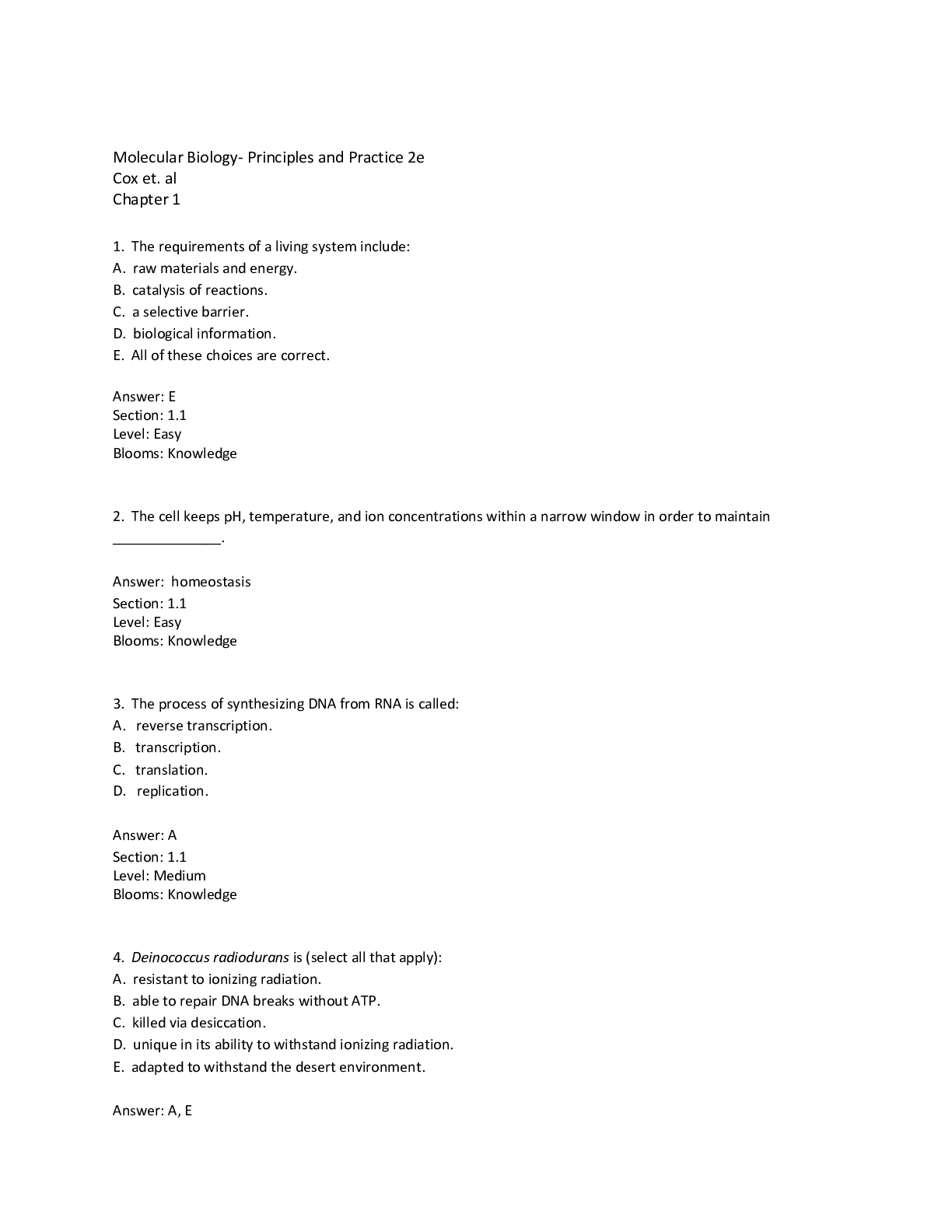
Instant download
Reviews( 0 )
Document information
Connected school, study & course
About the document
Uploaded On
Dec 04, 2022
Number of pages
307
Written in
Additional information
This document has been written for:
Uploaded
Dec 04, 2022
Downloads
0
Views
126


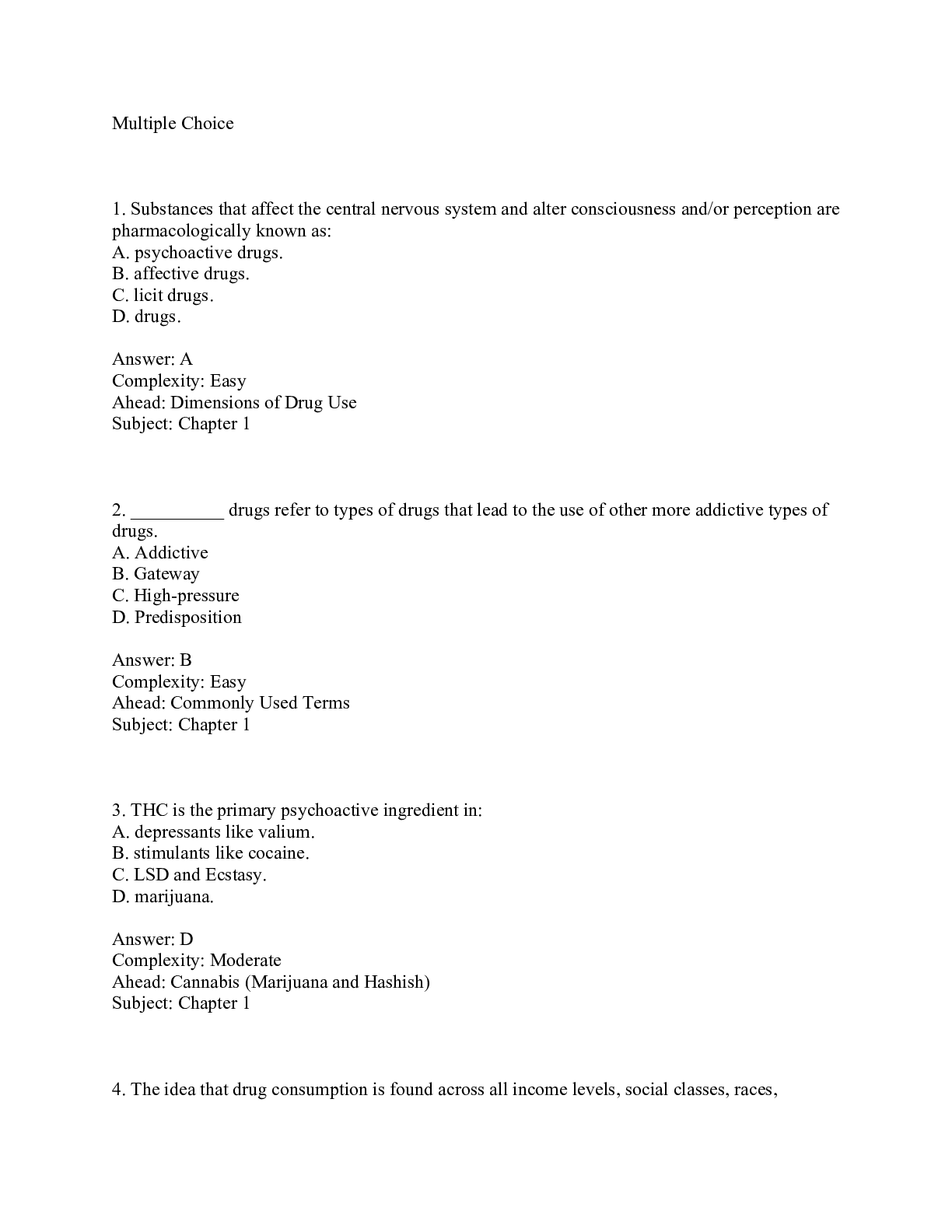
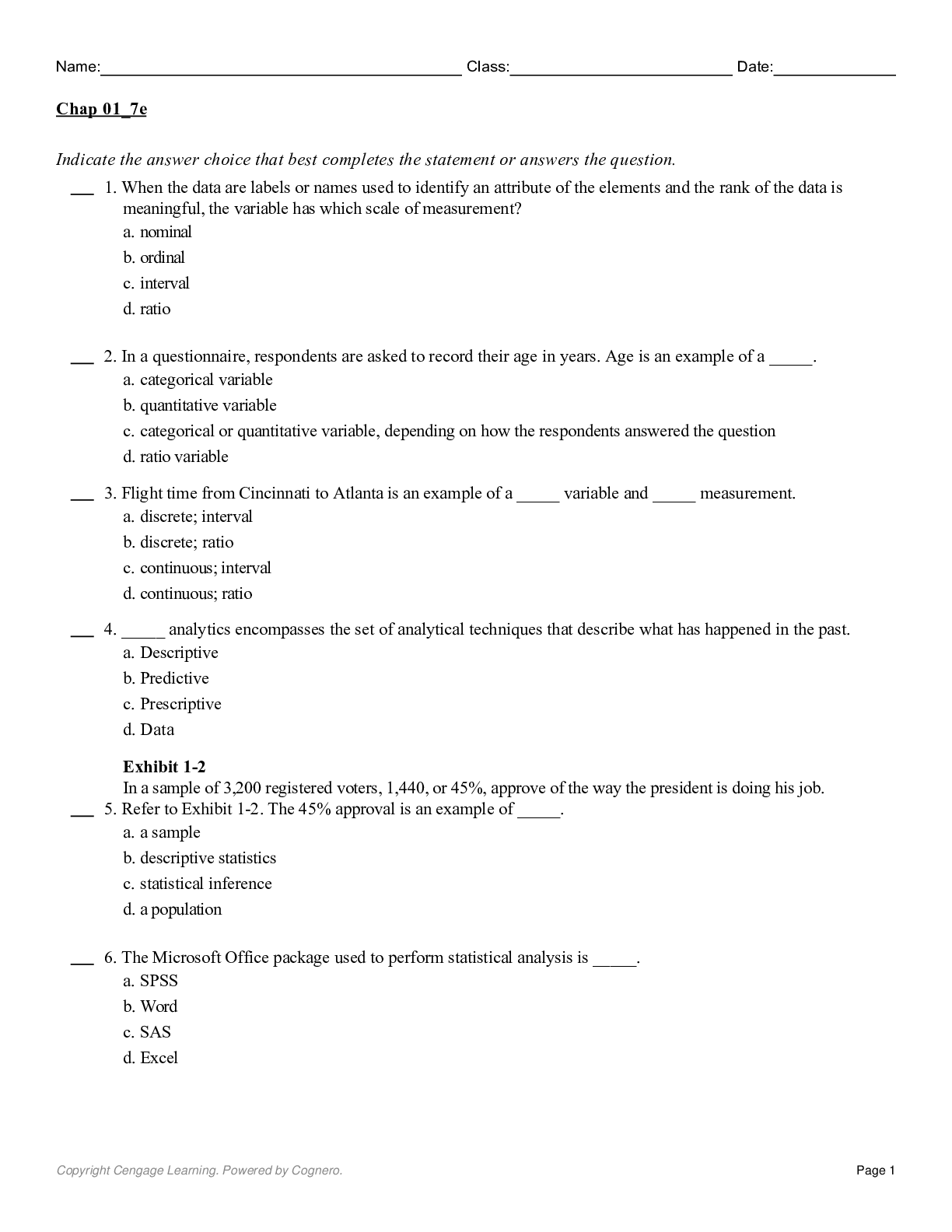


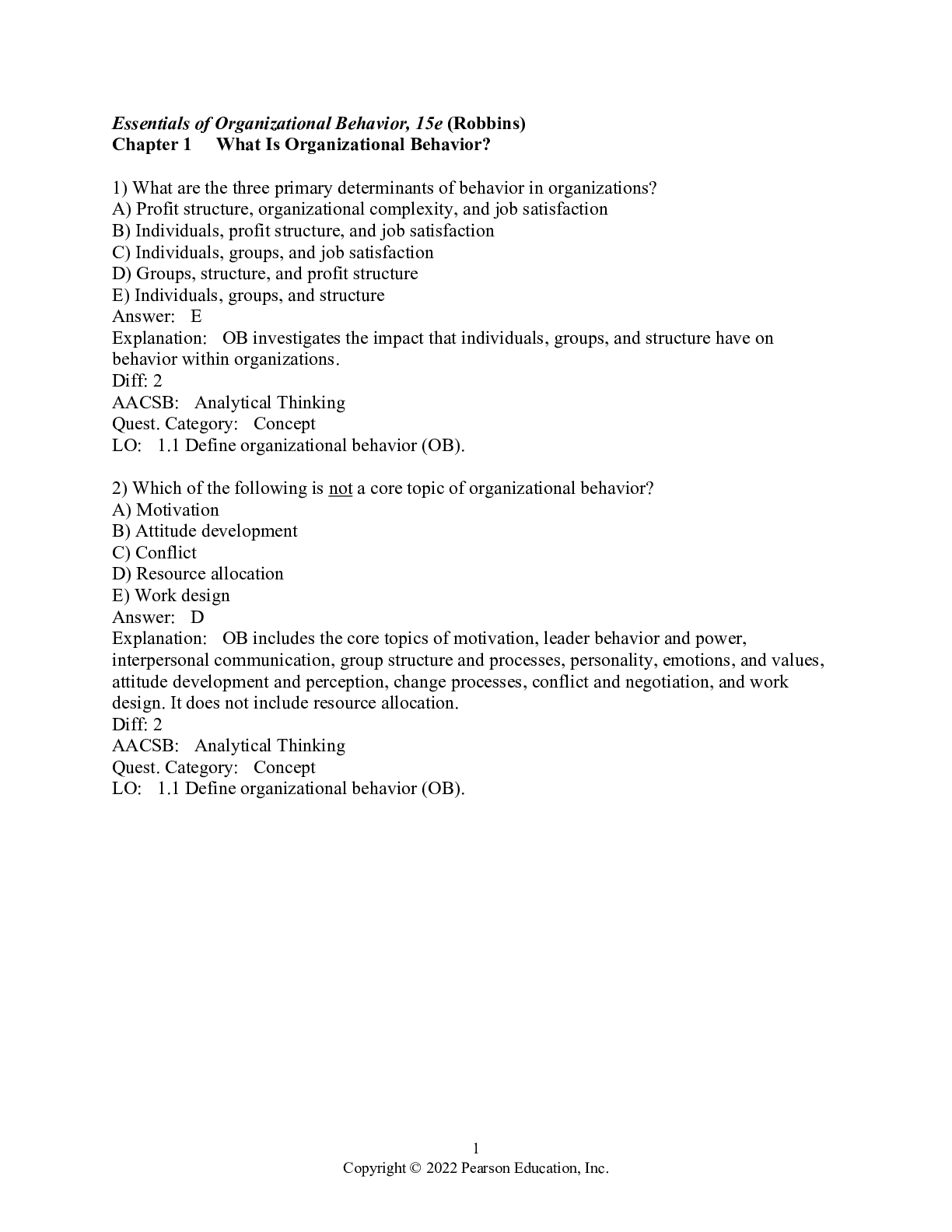

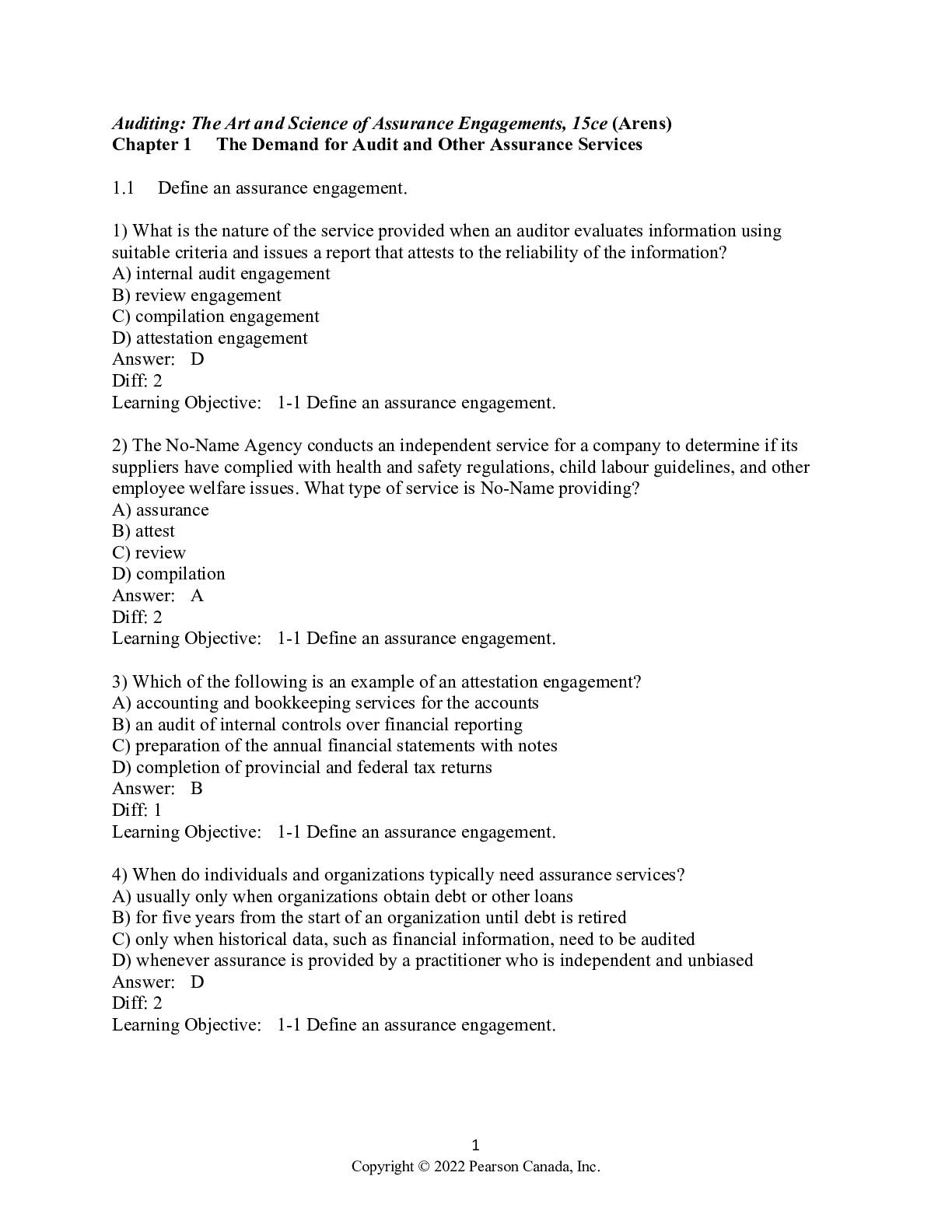
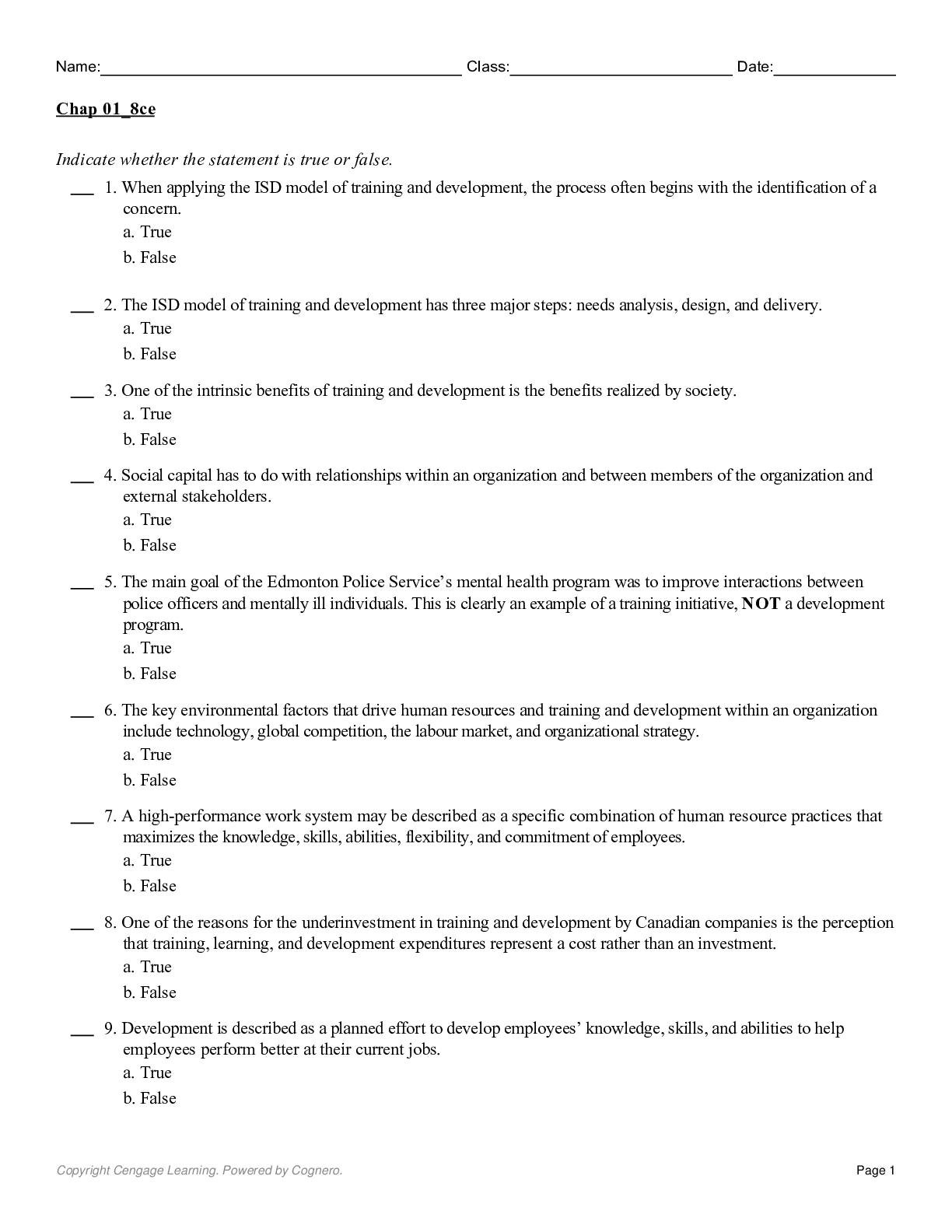
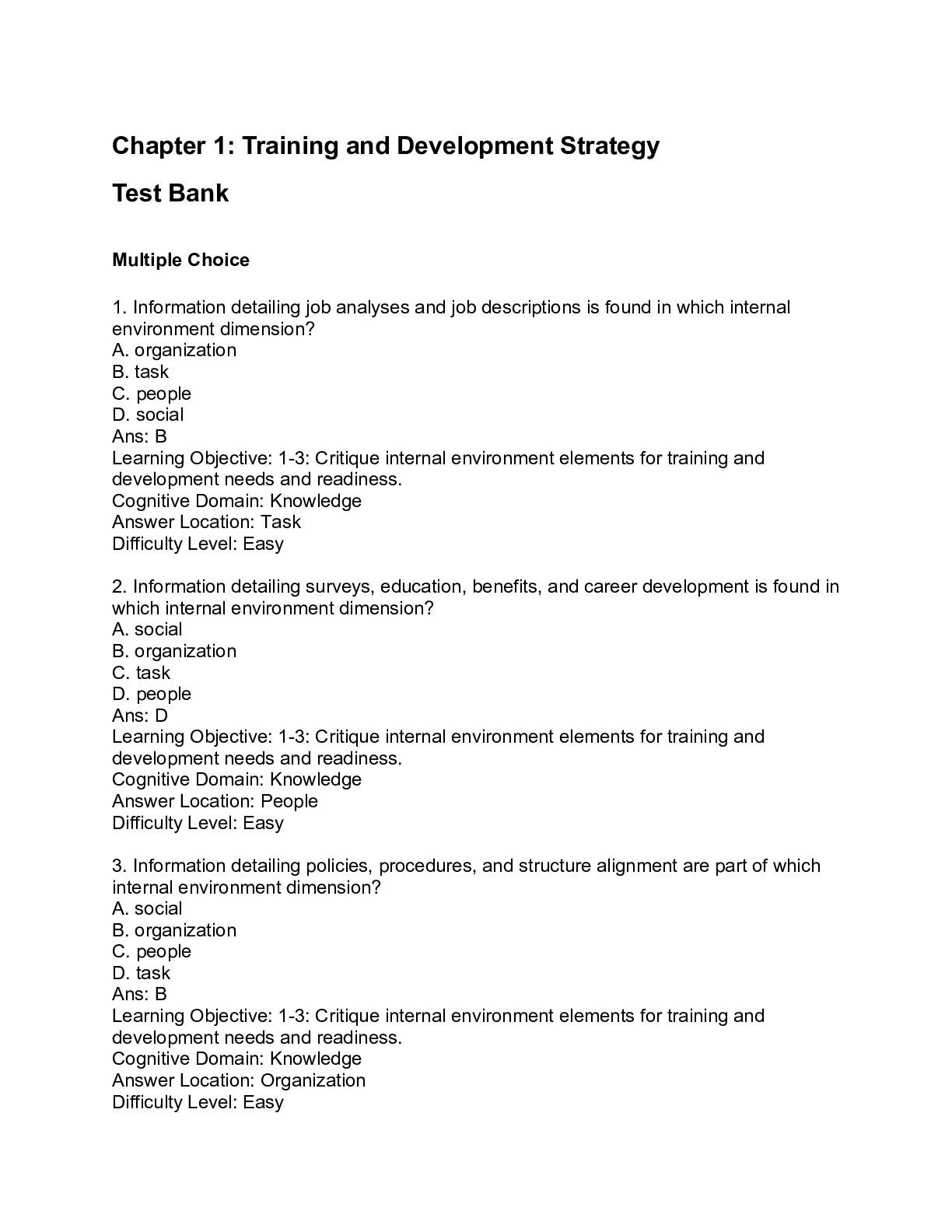
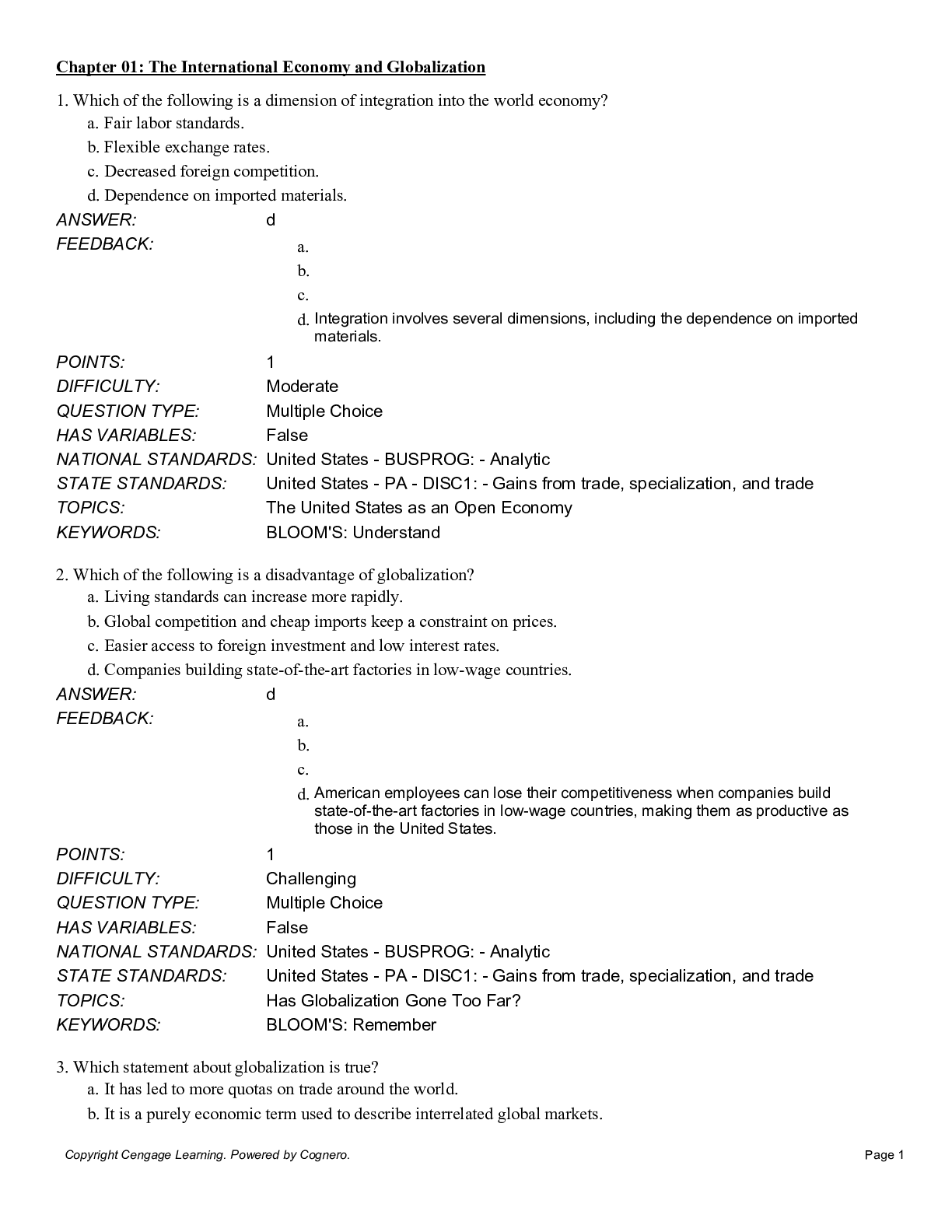
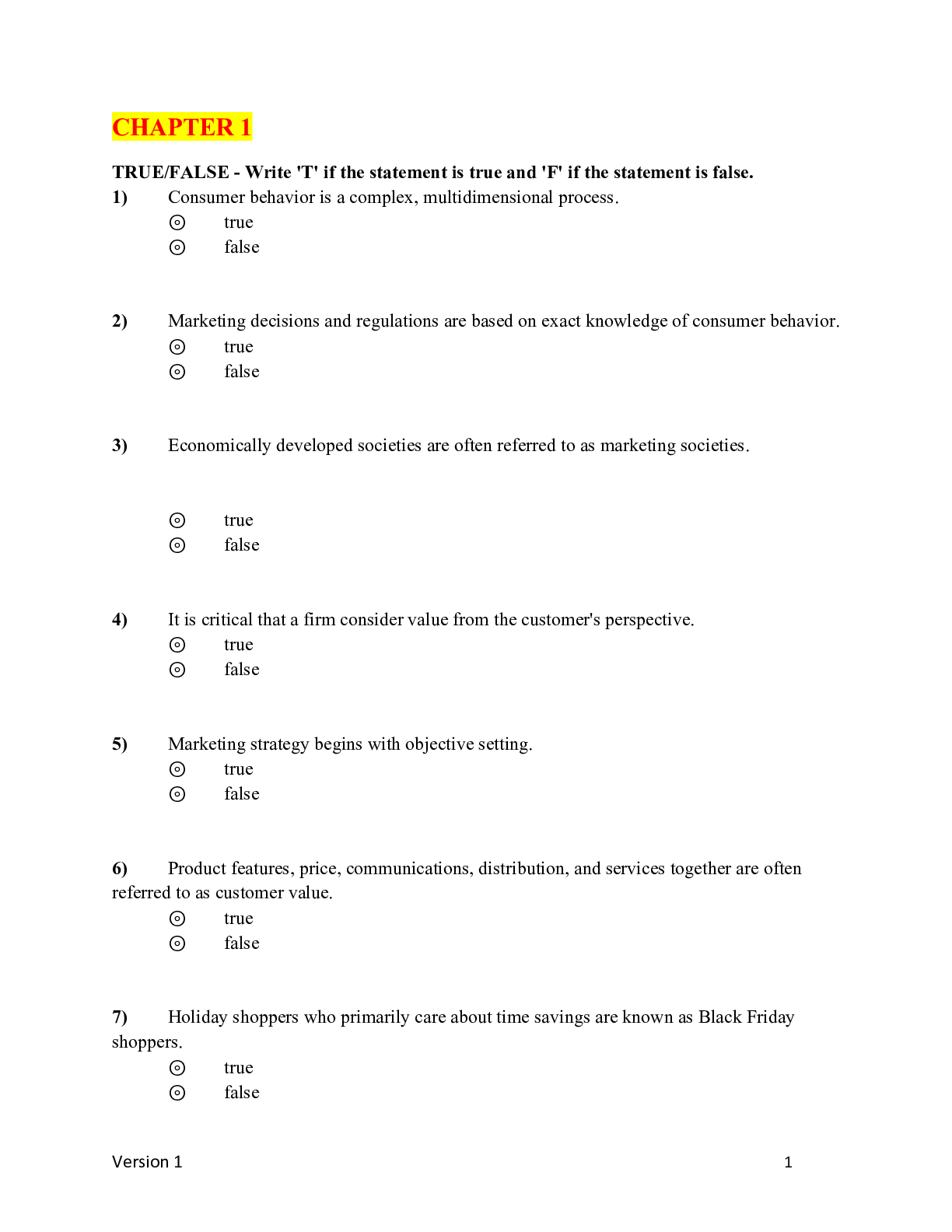
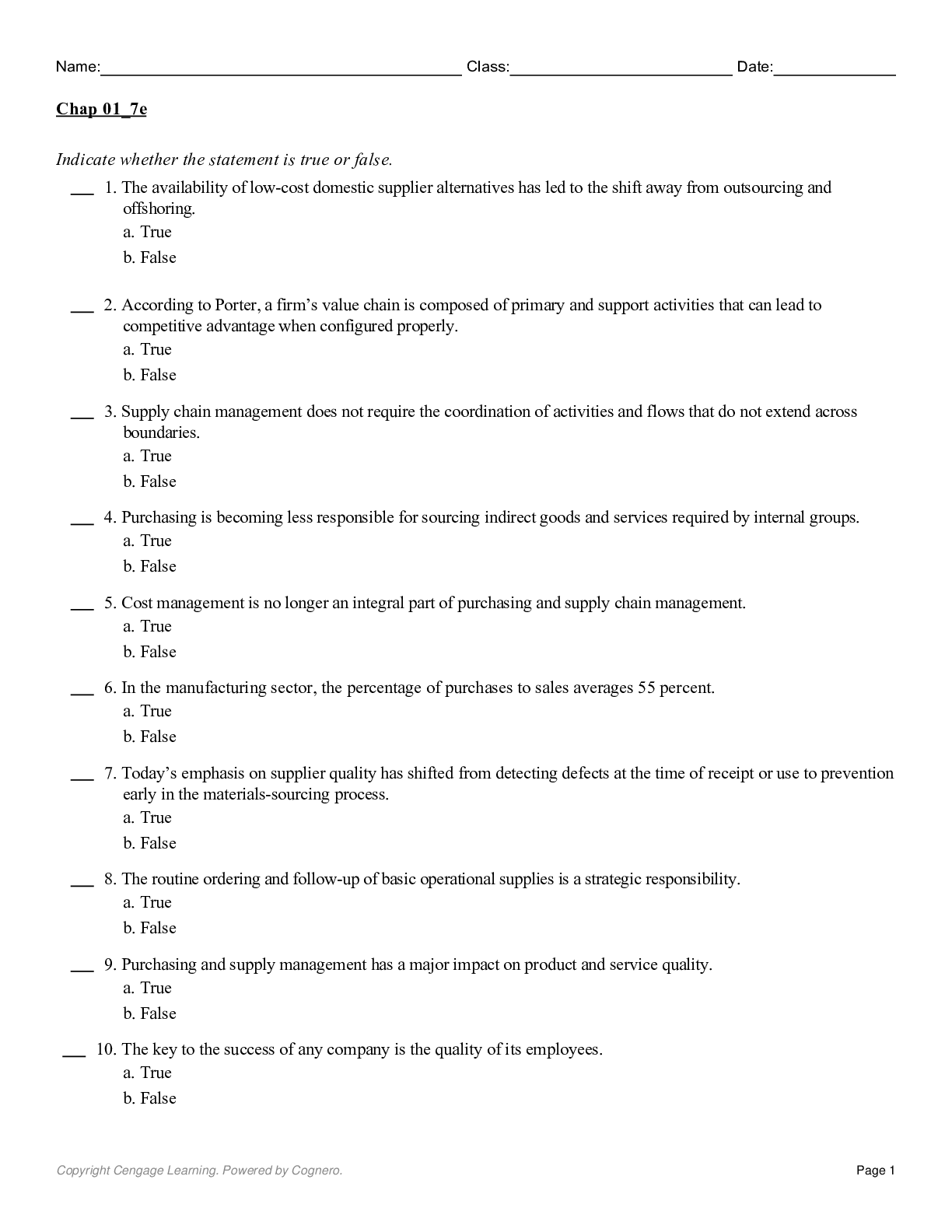
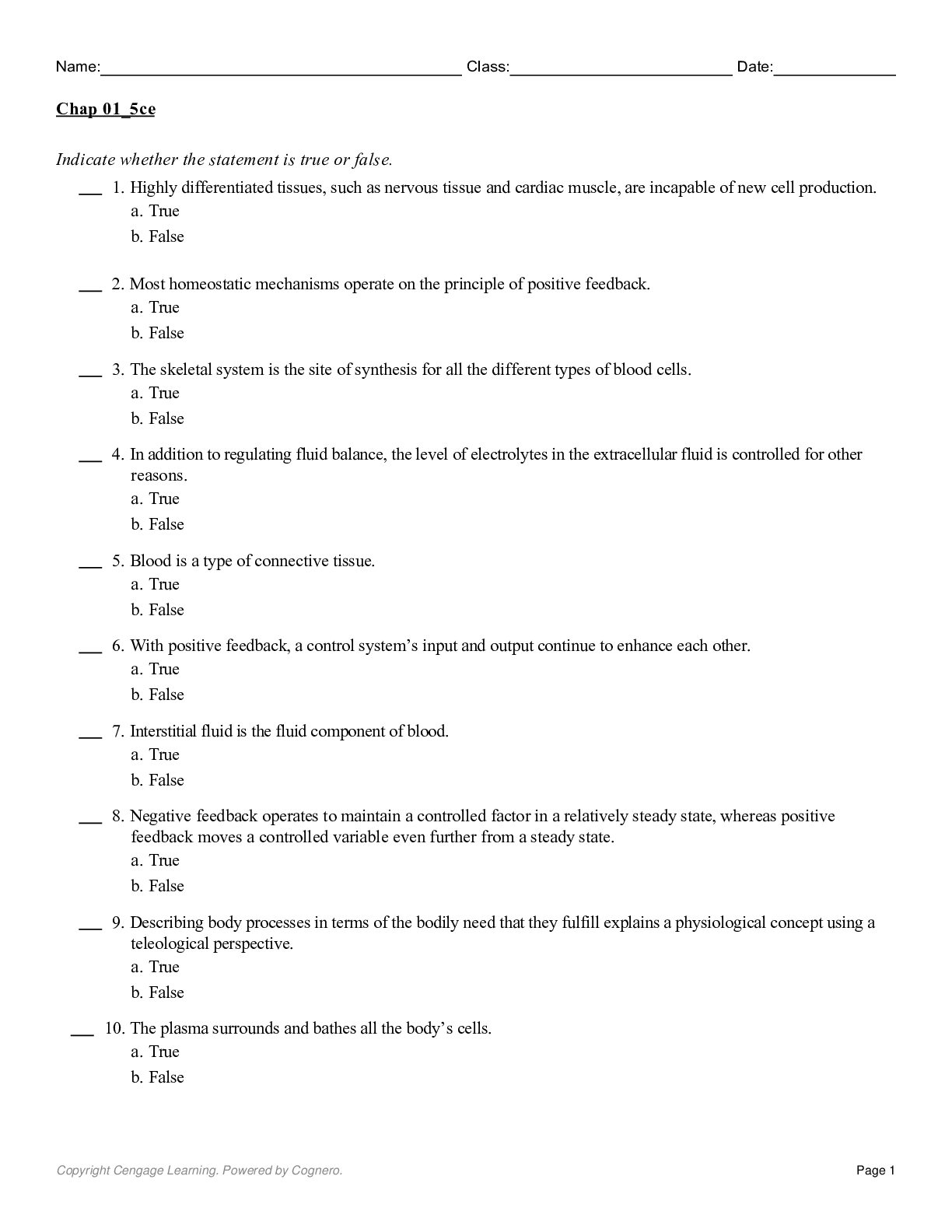

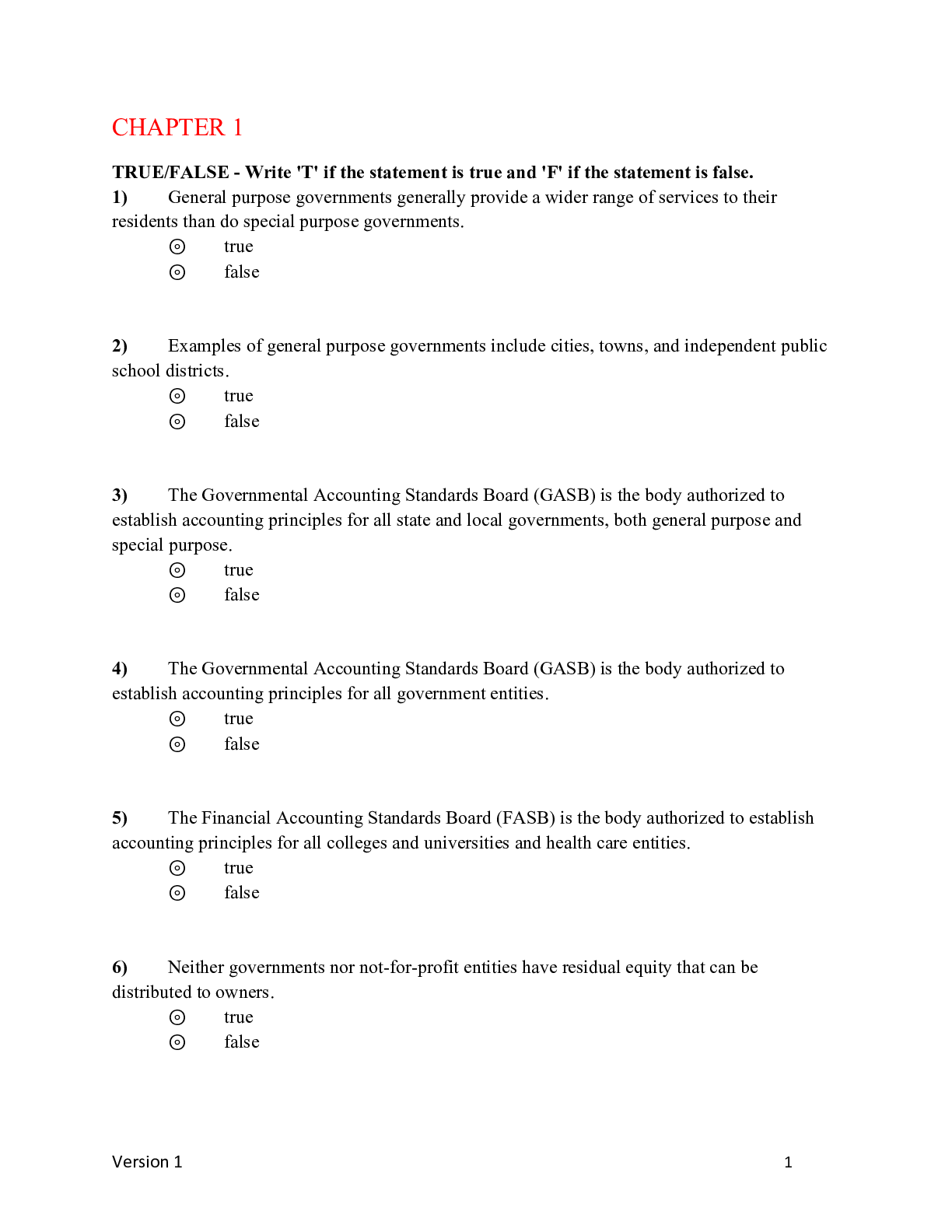
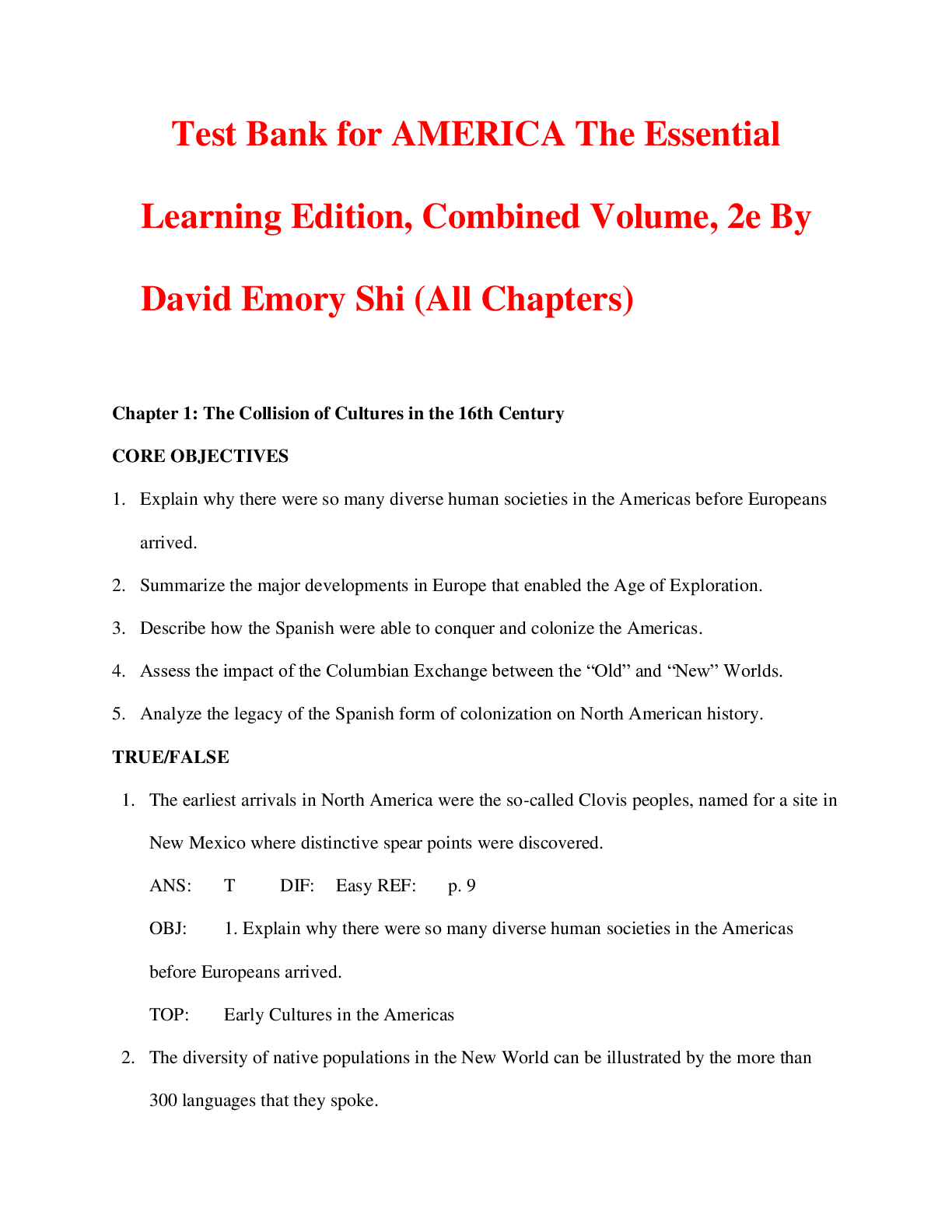

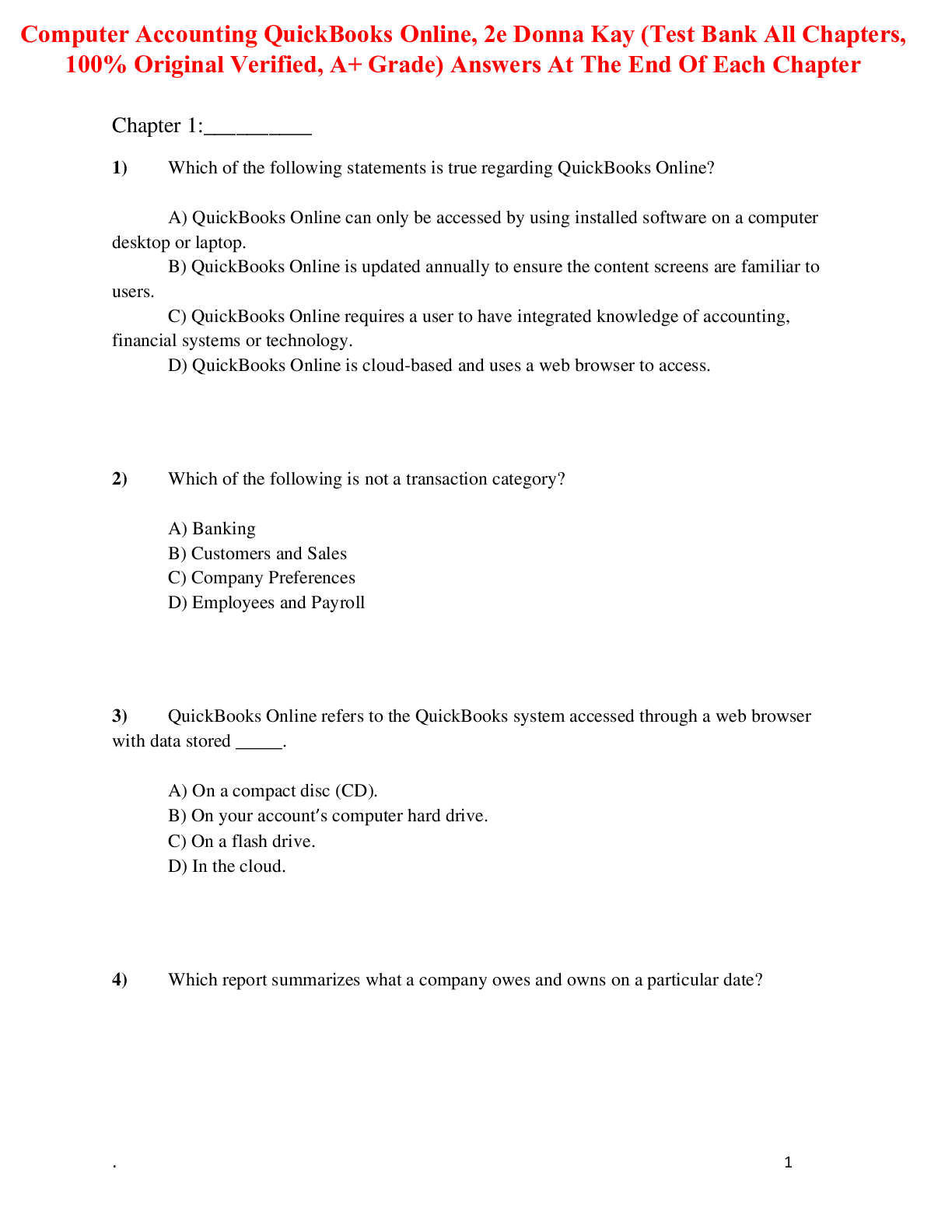

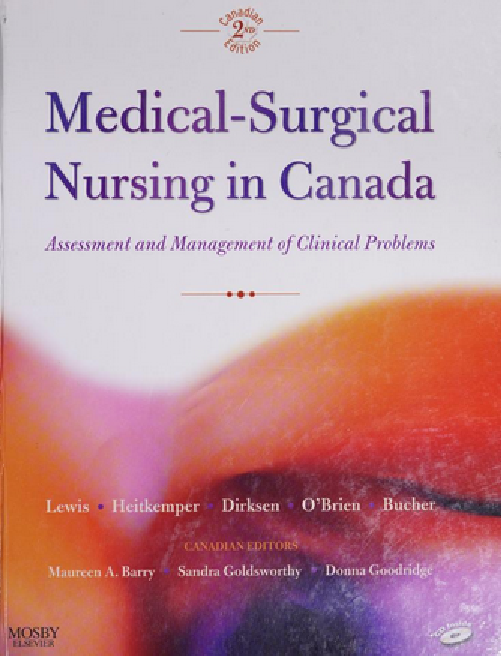
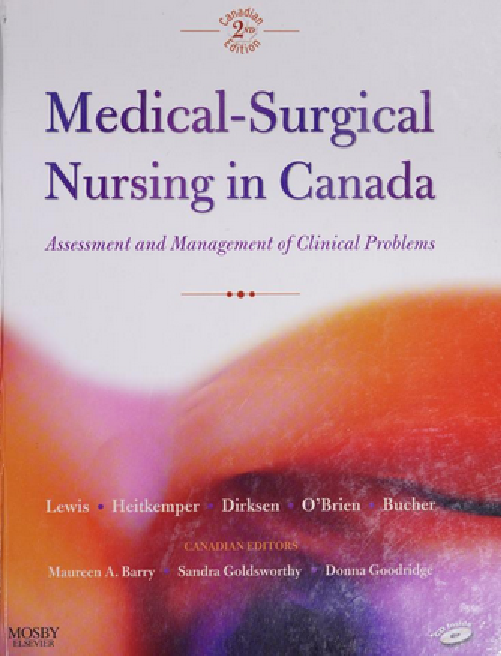




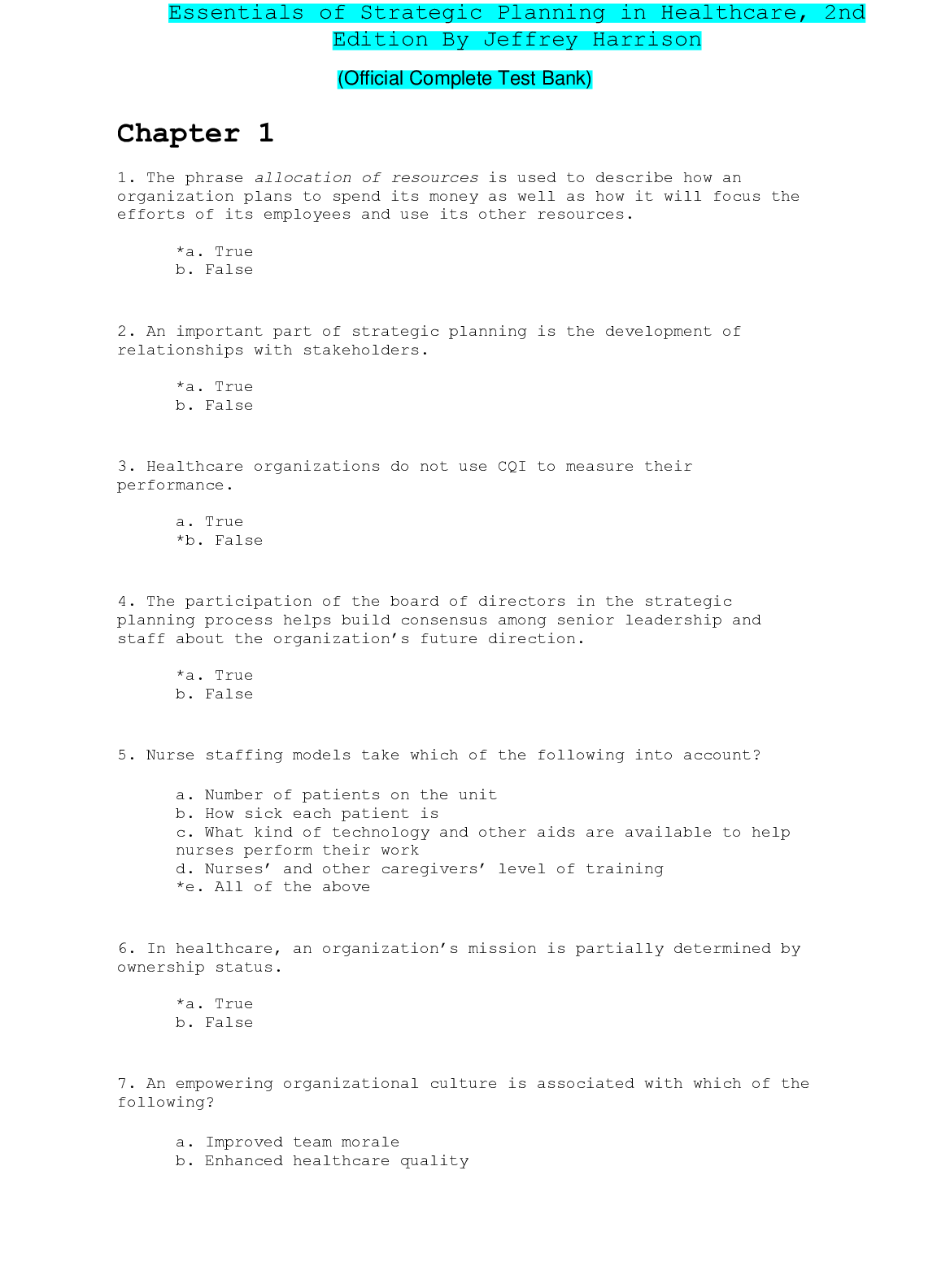
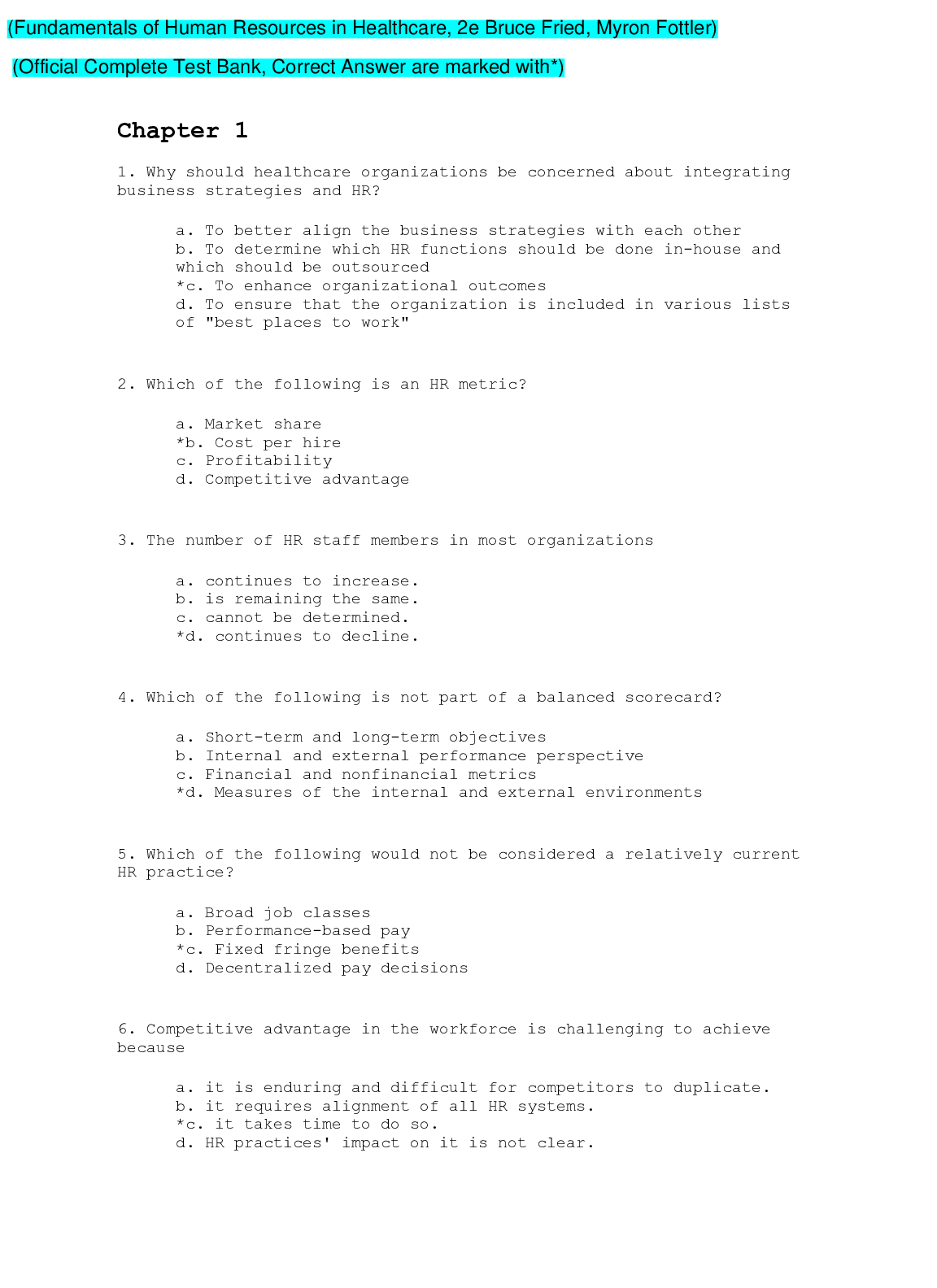
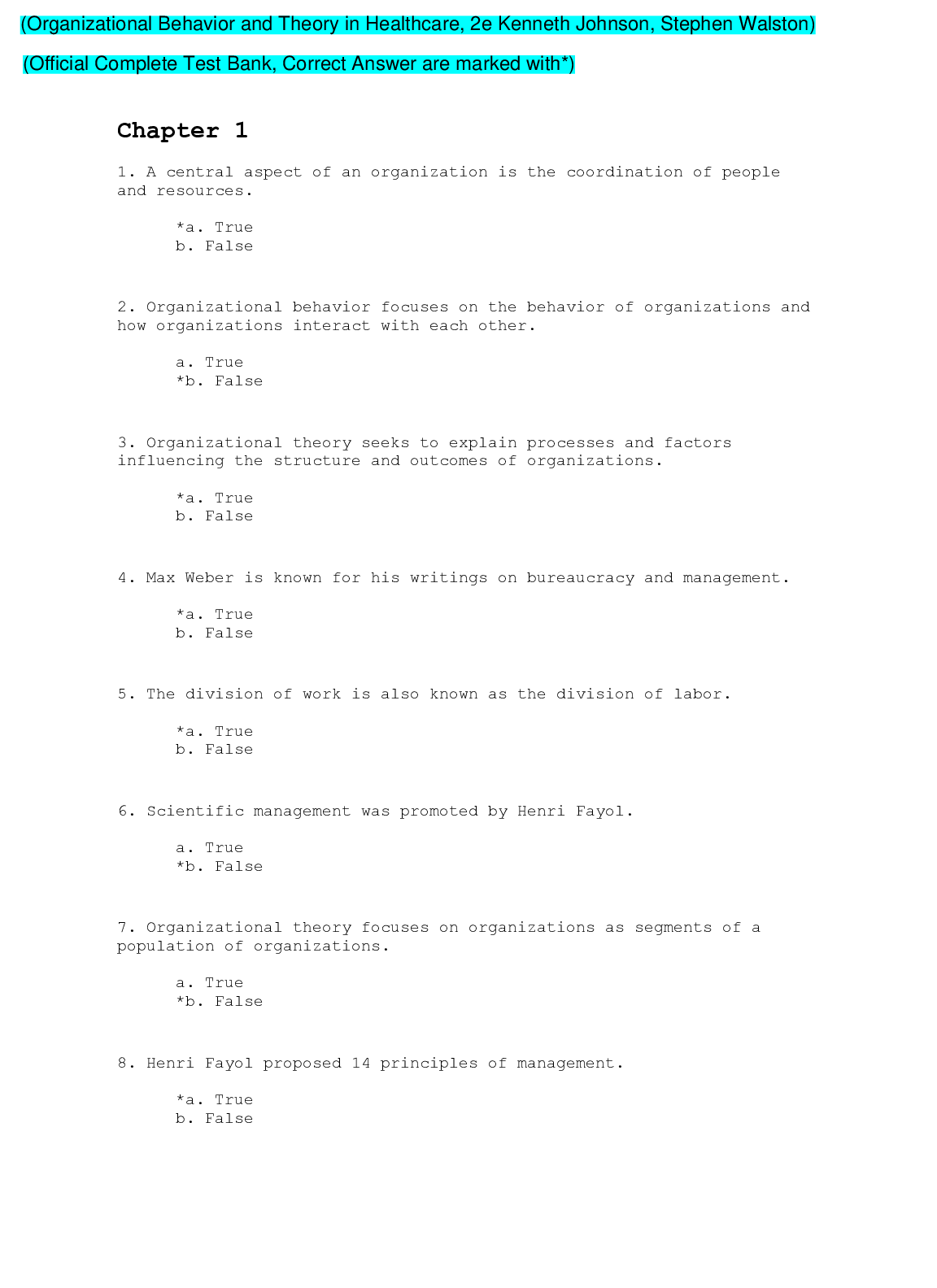

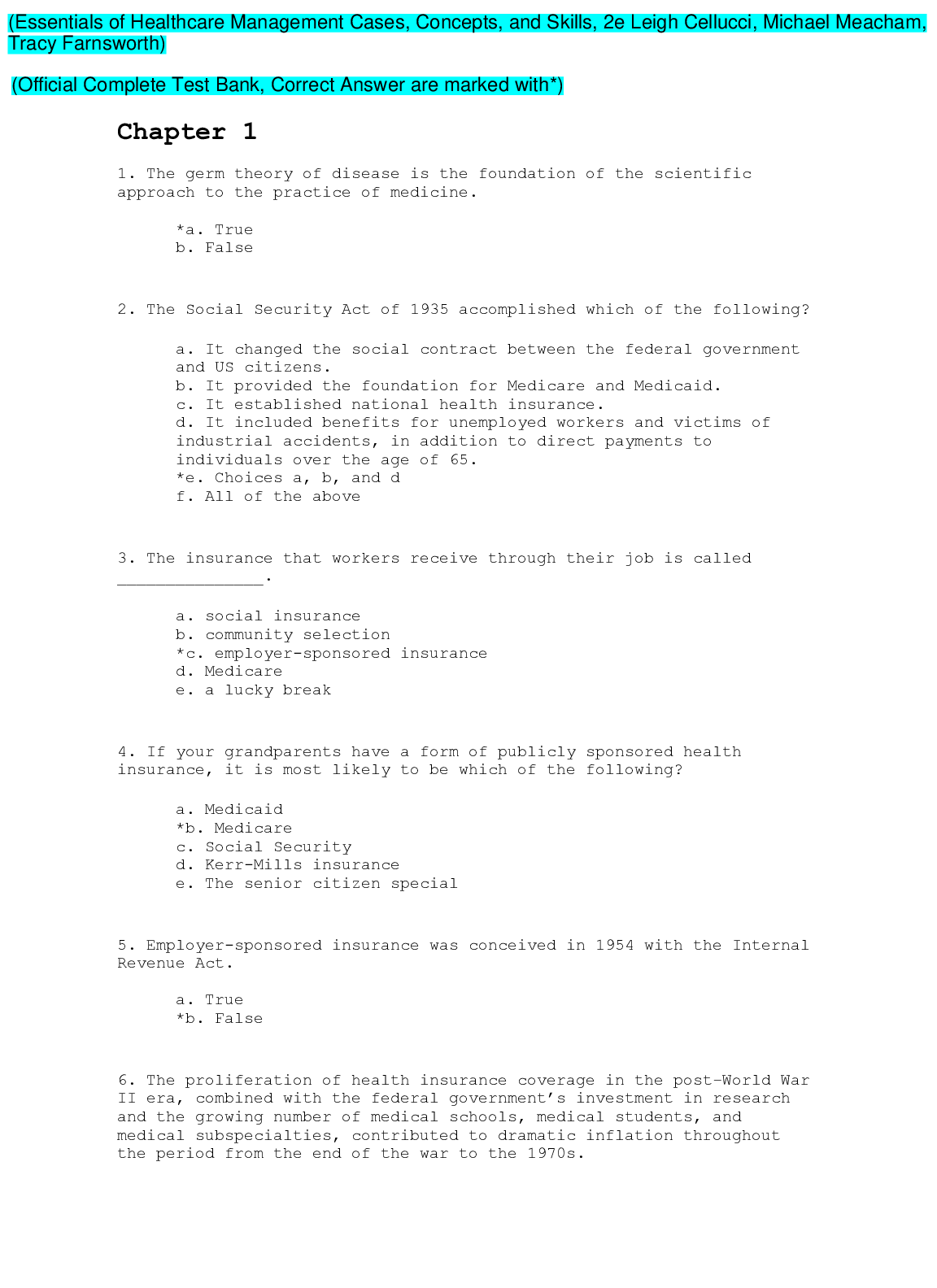
.png)
